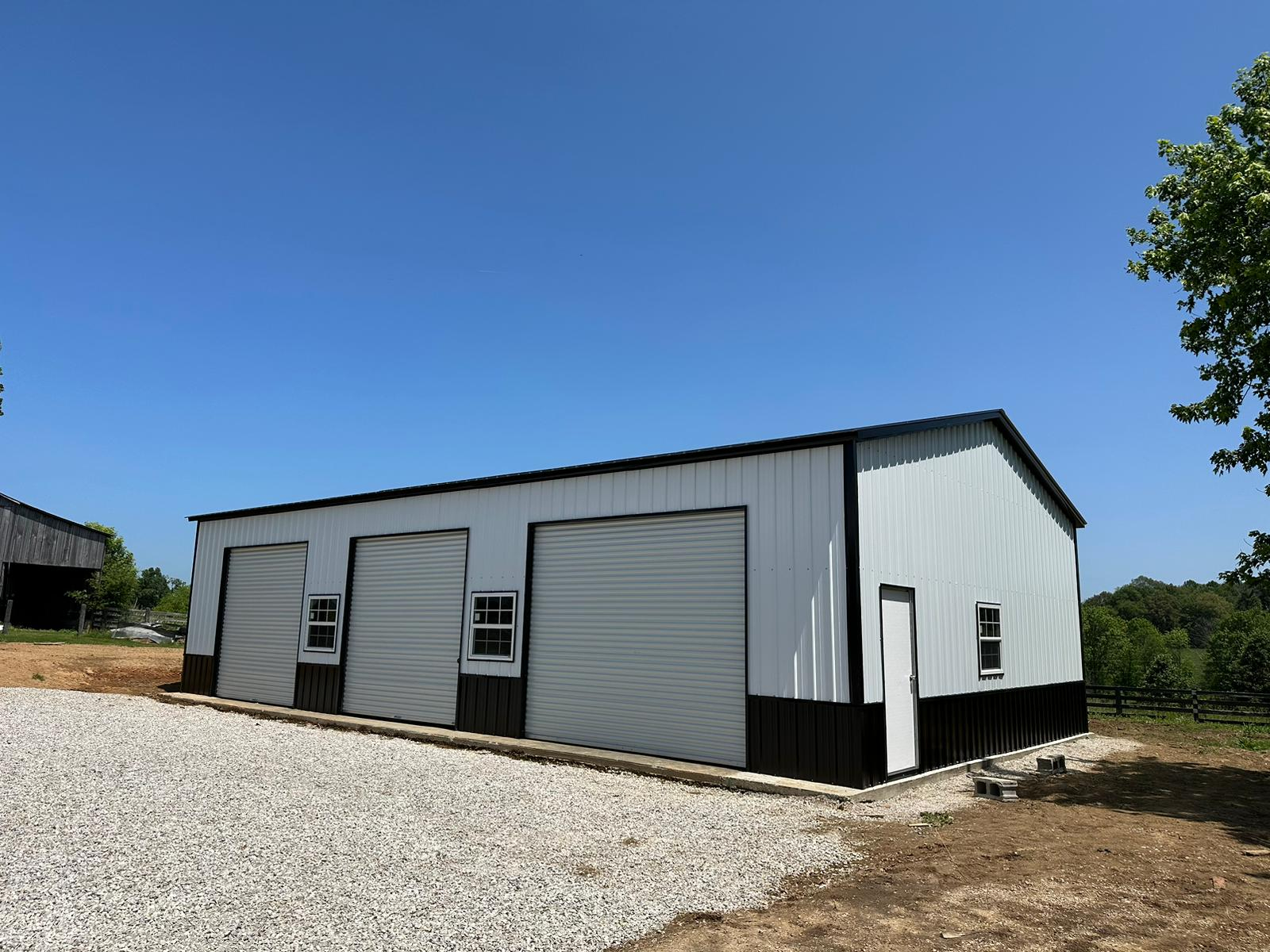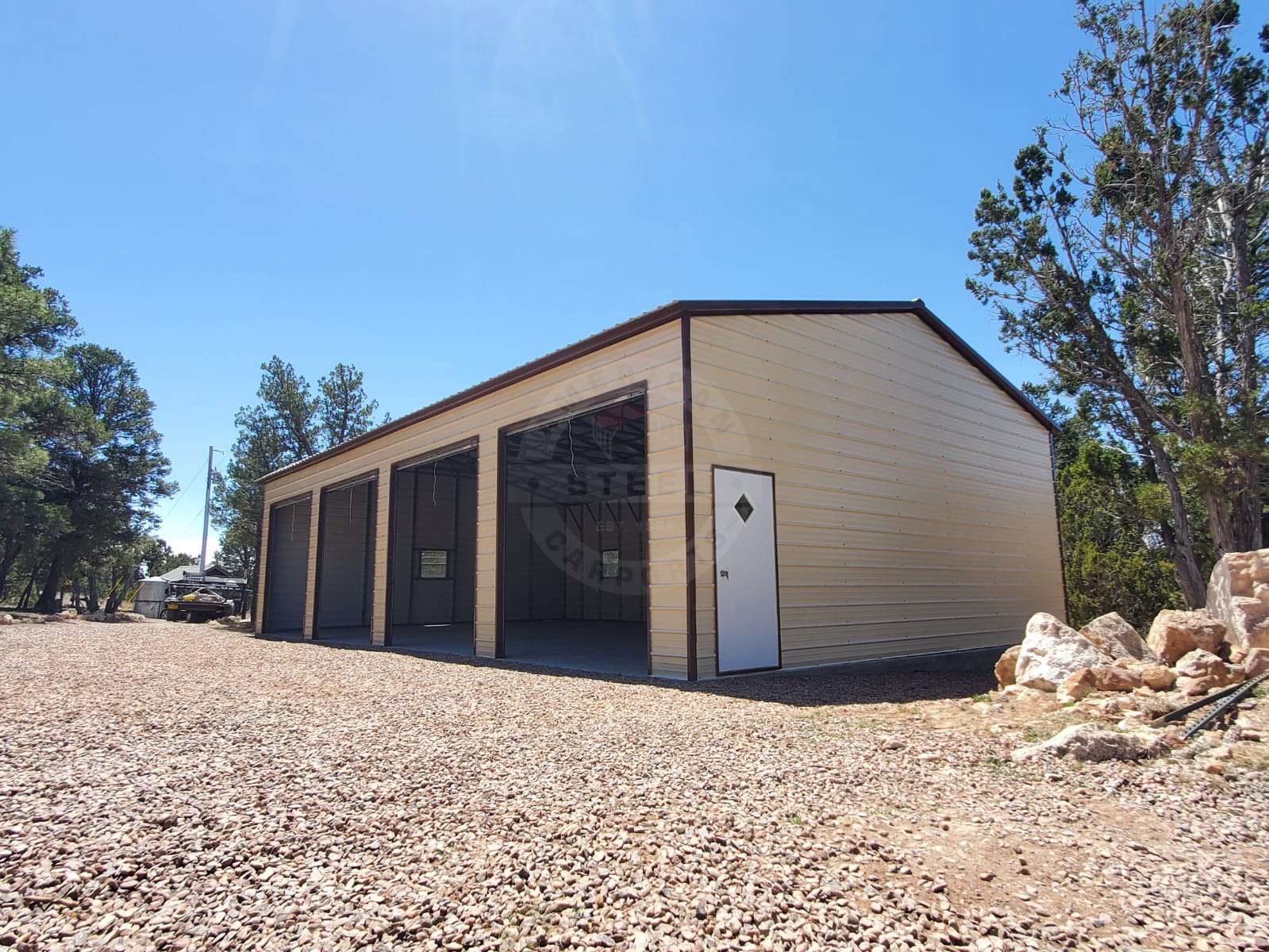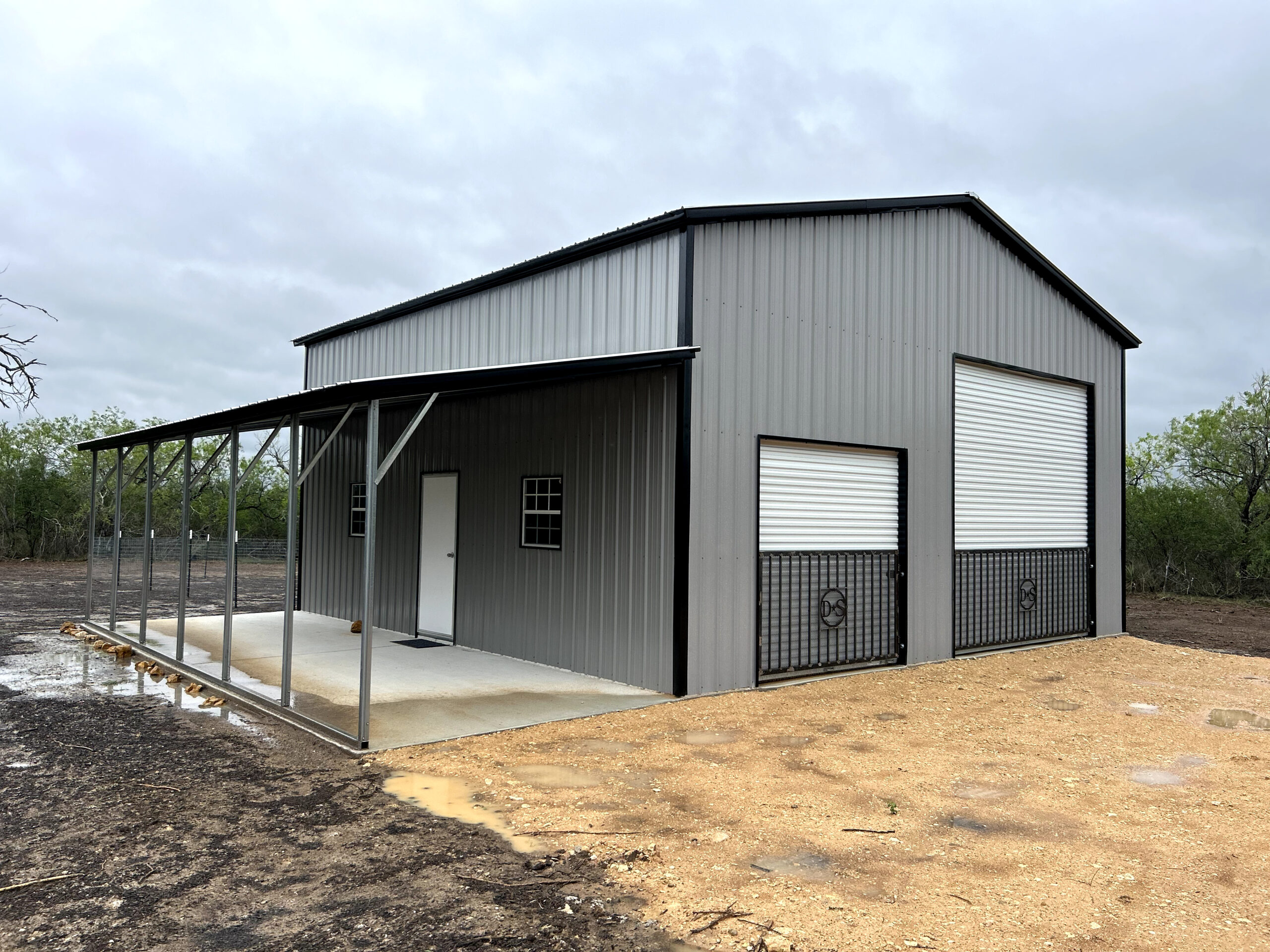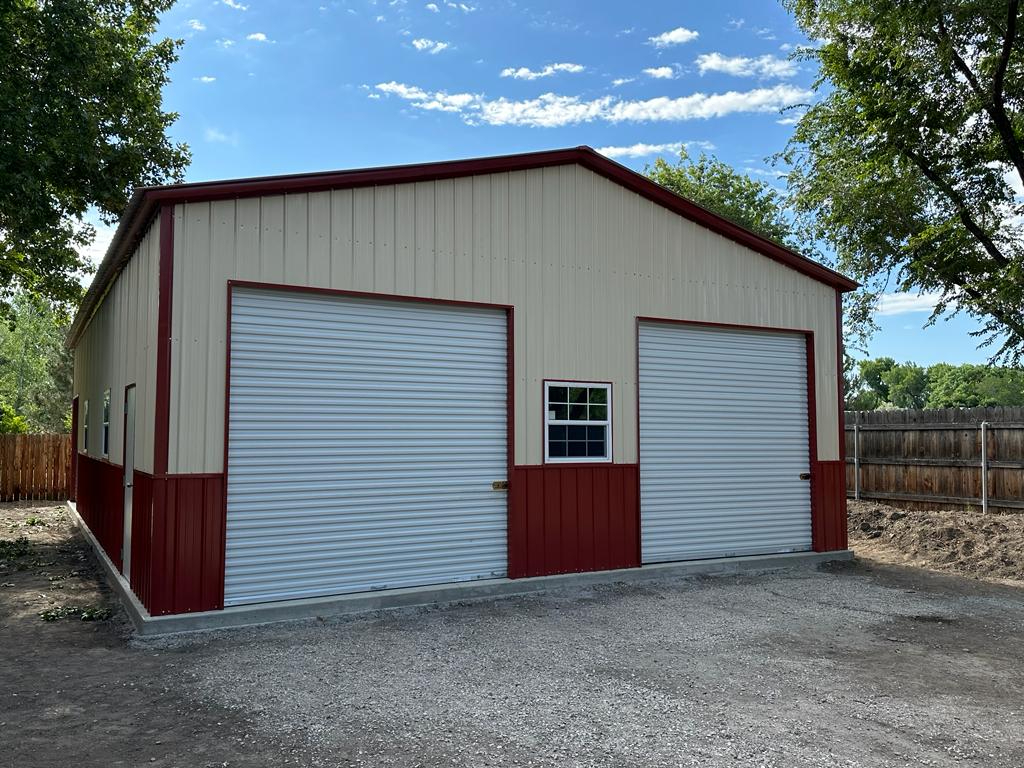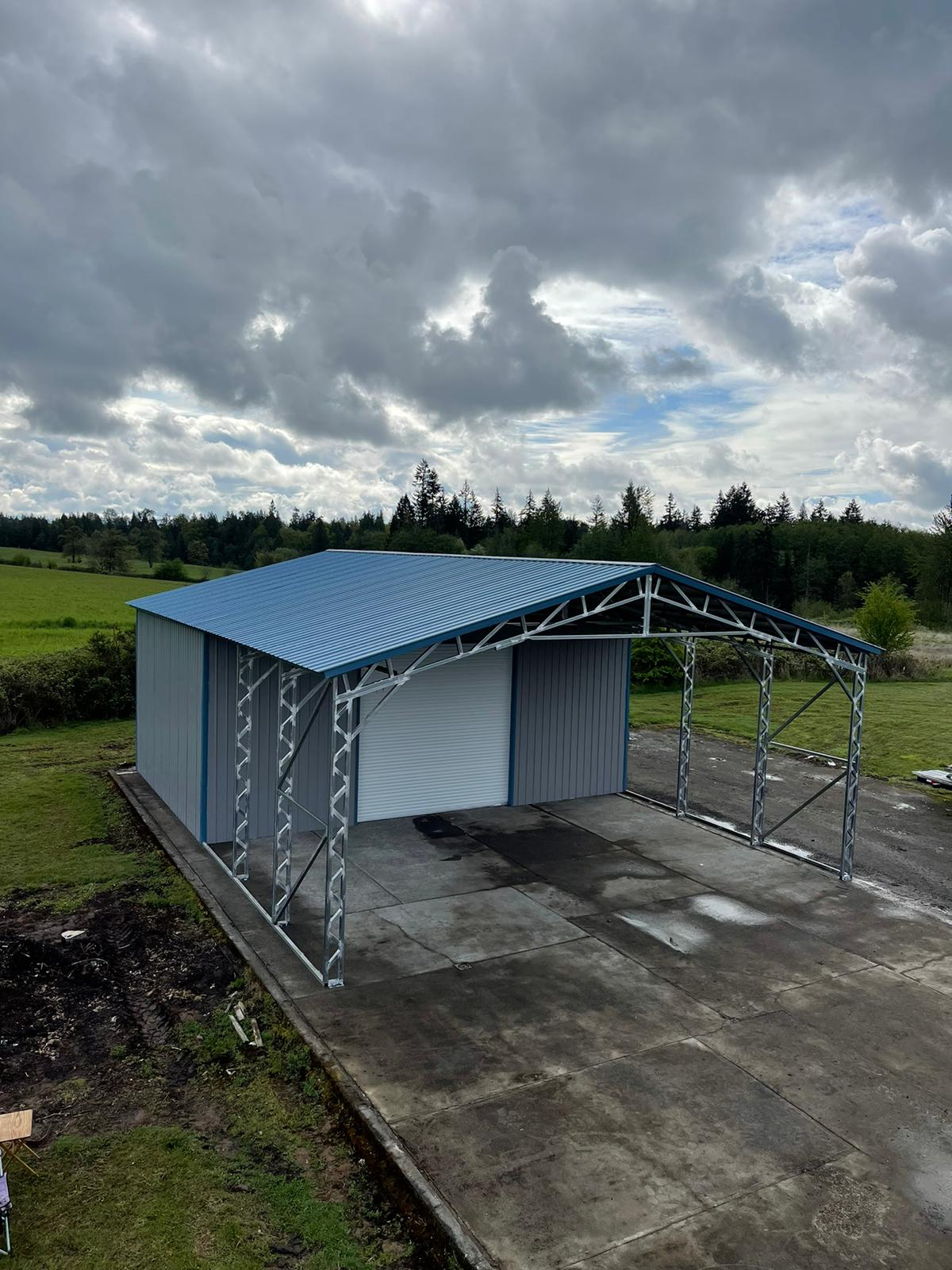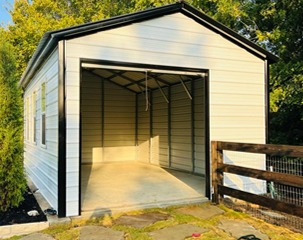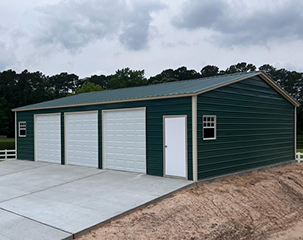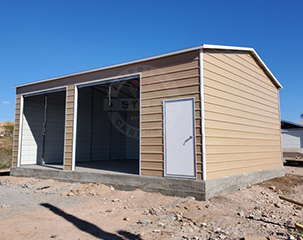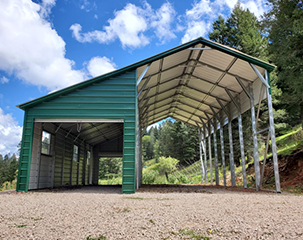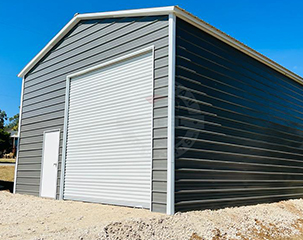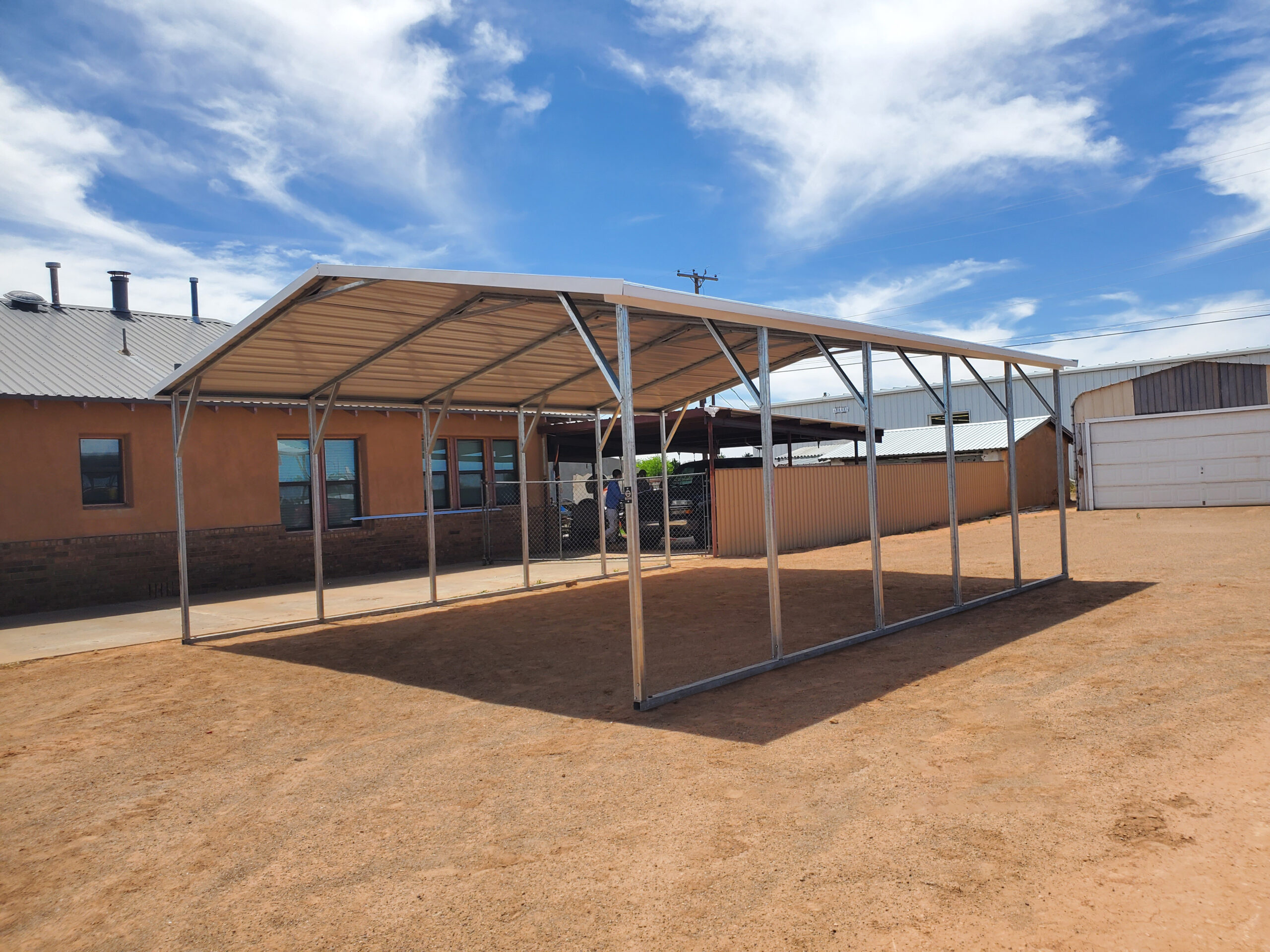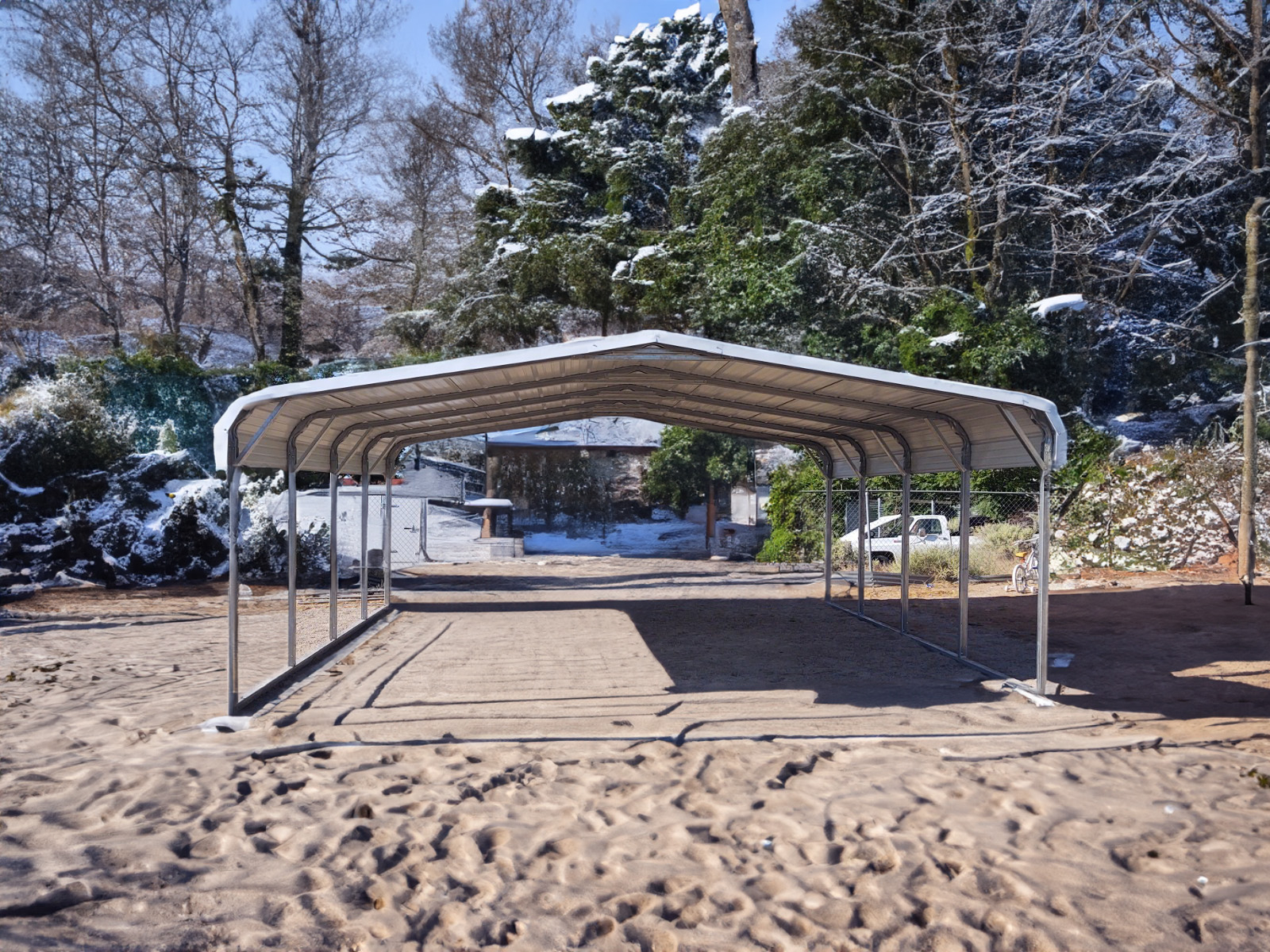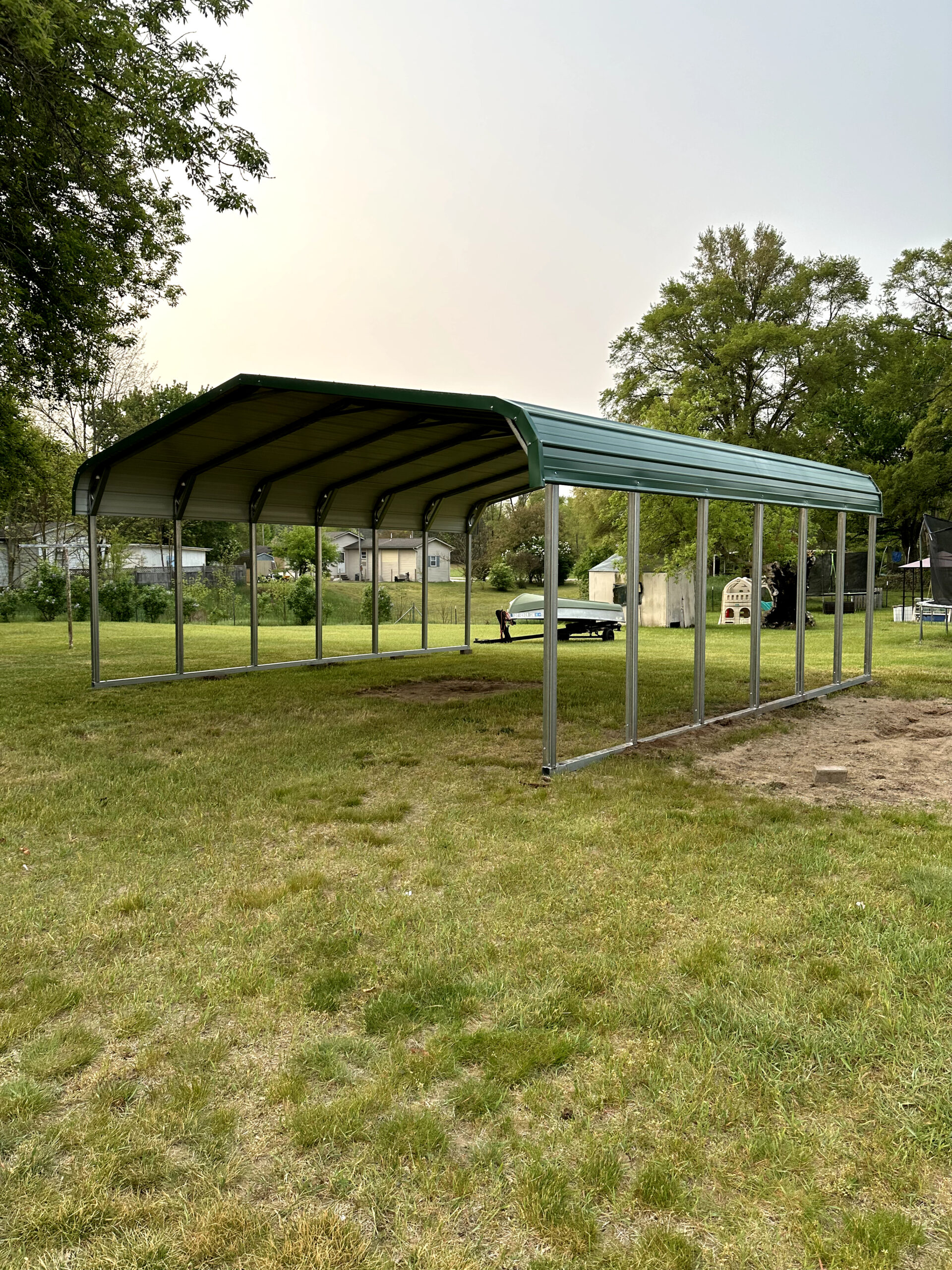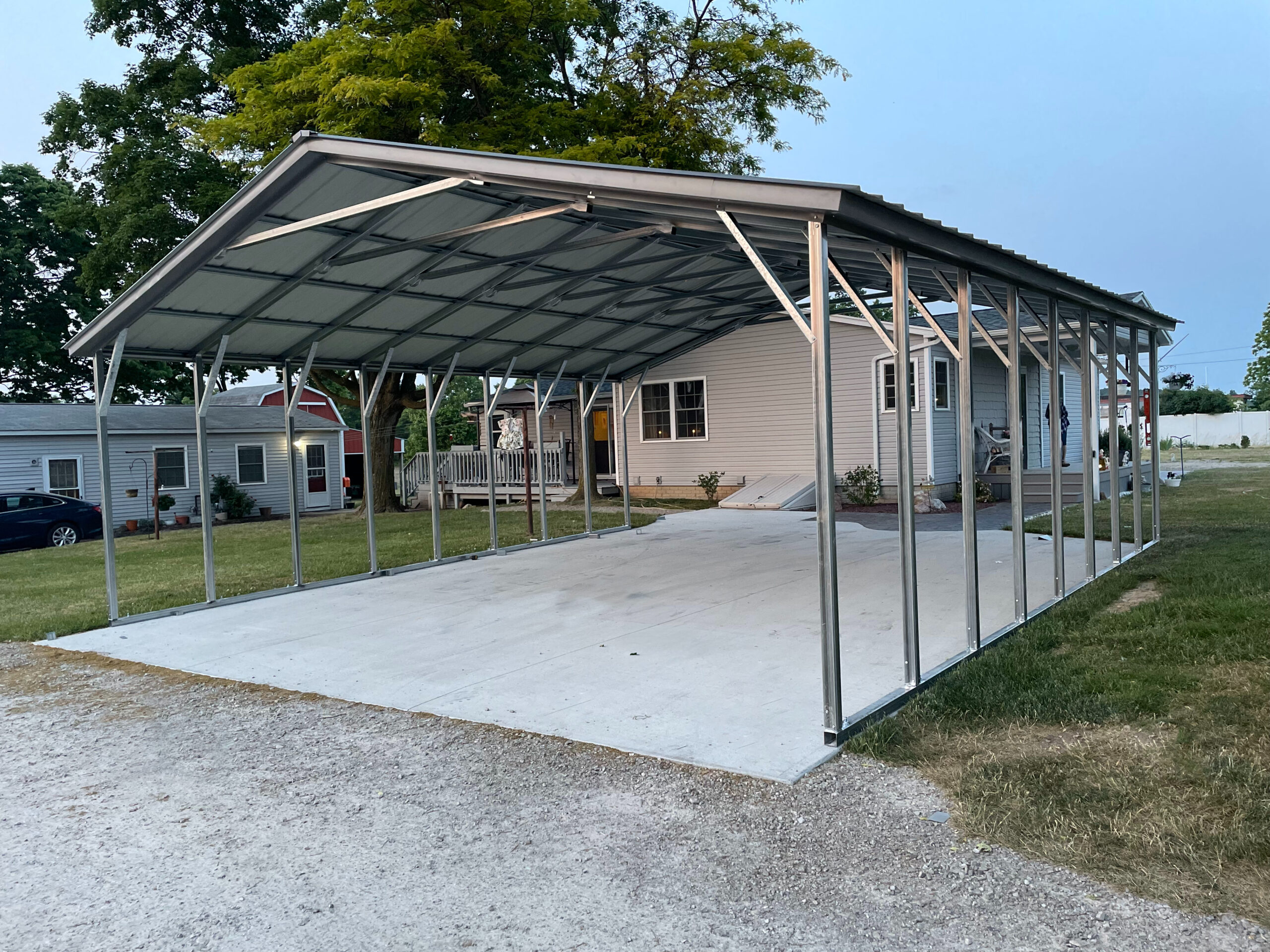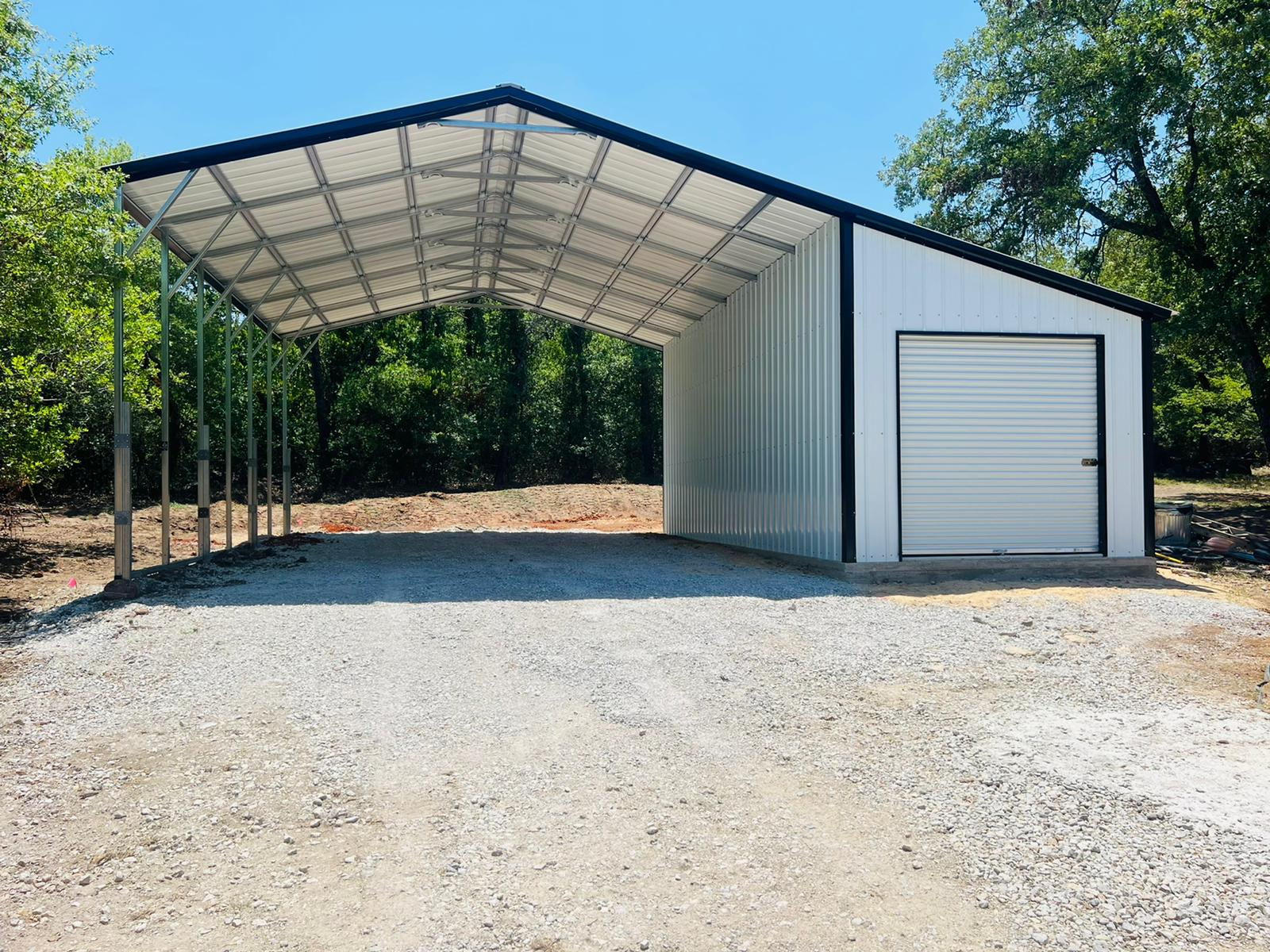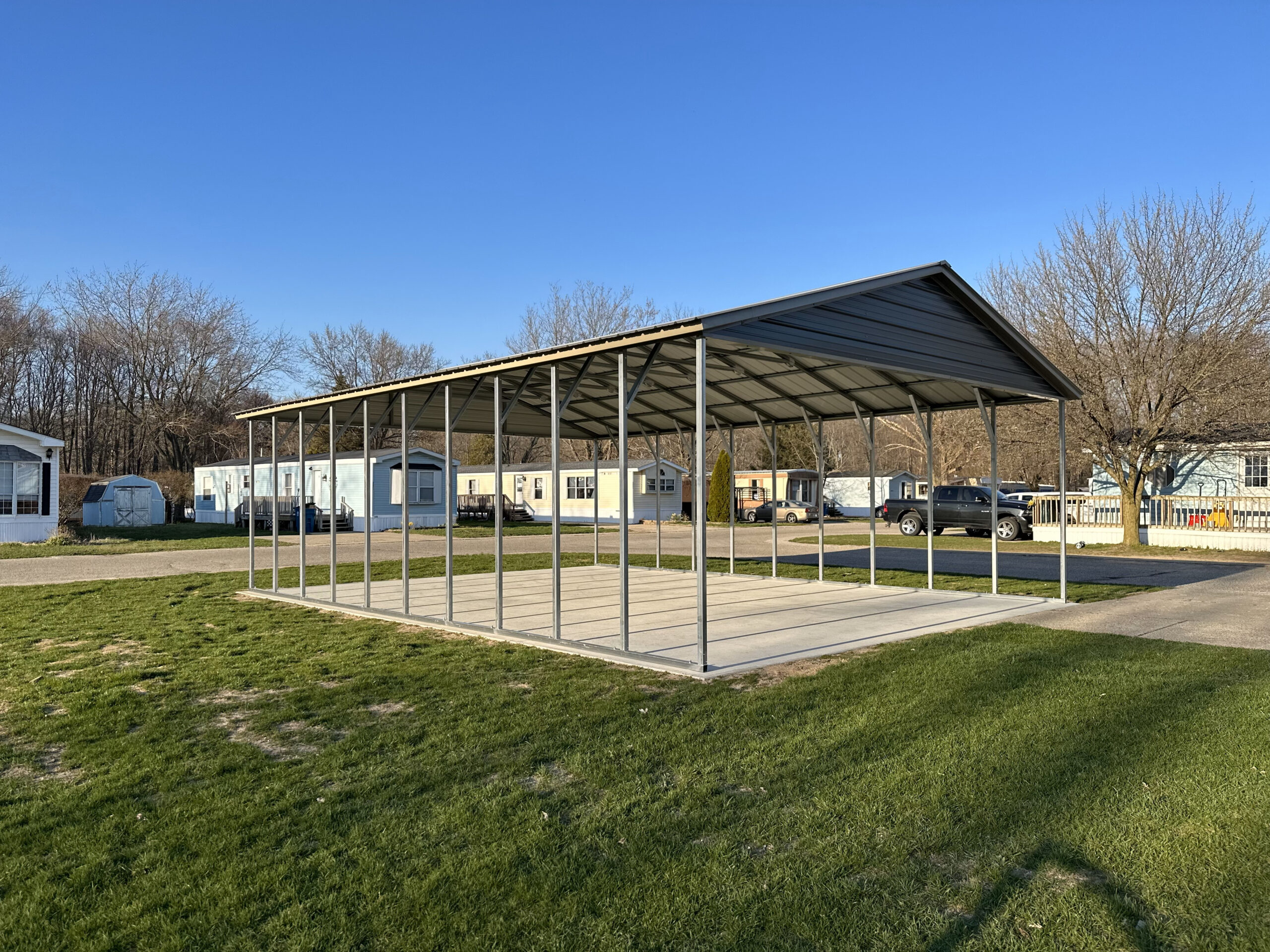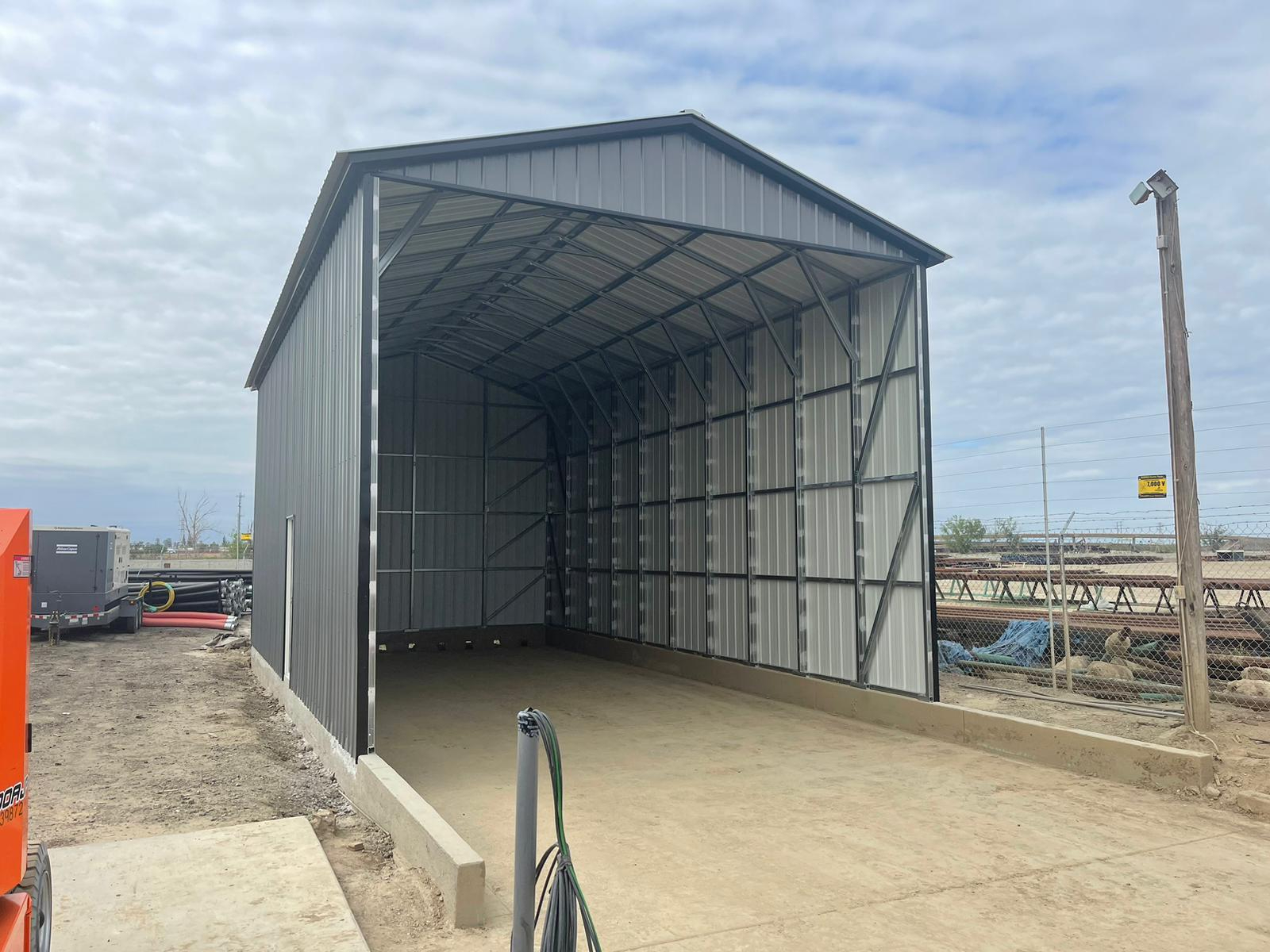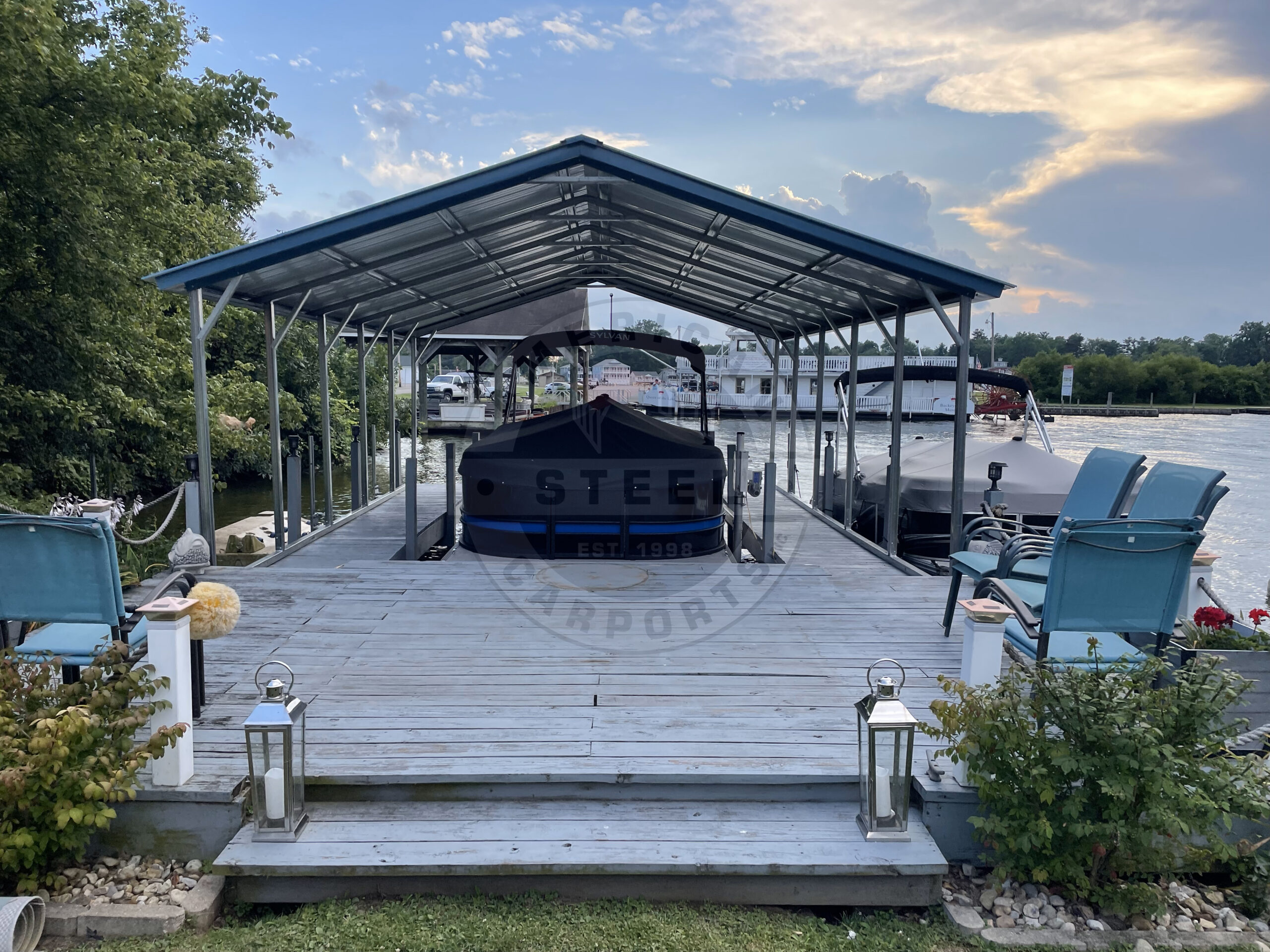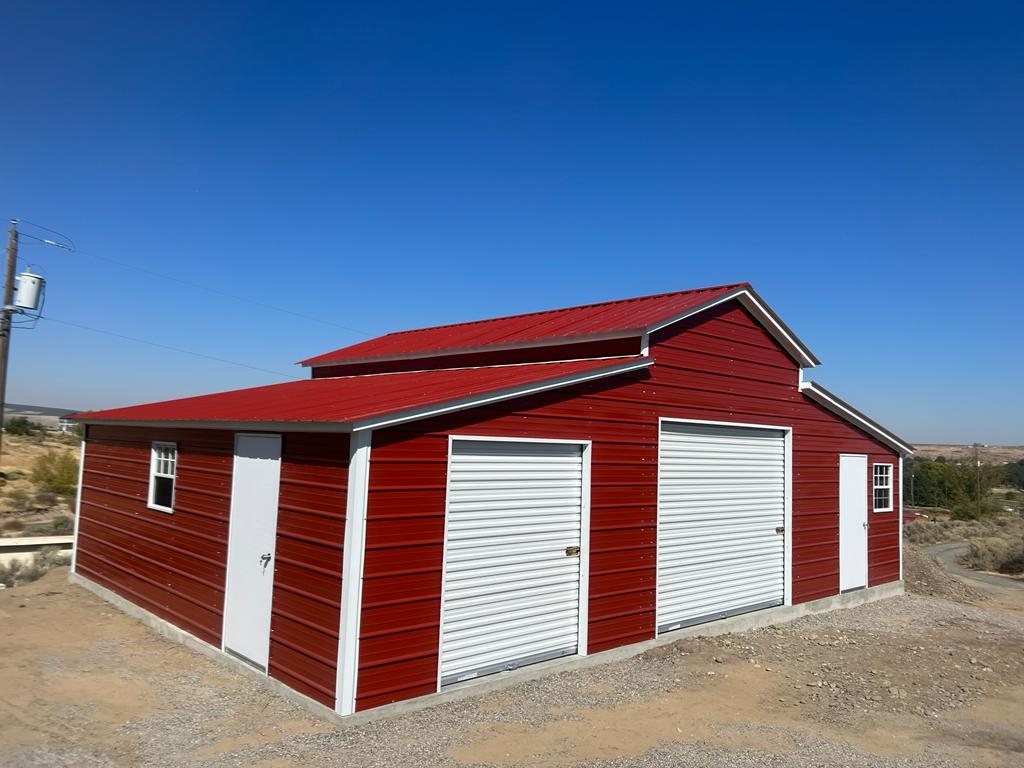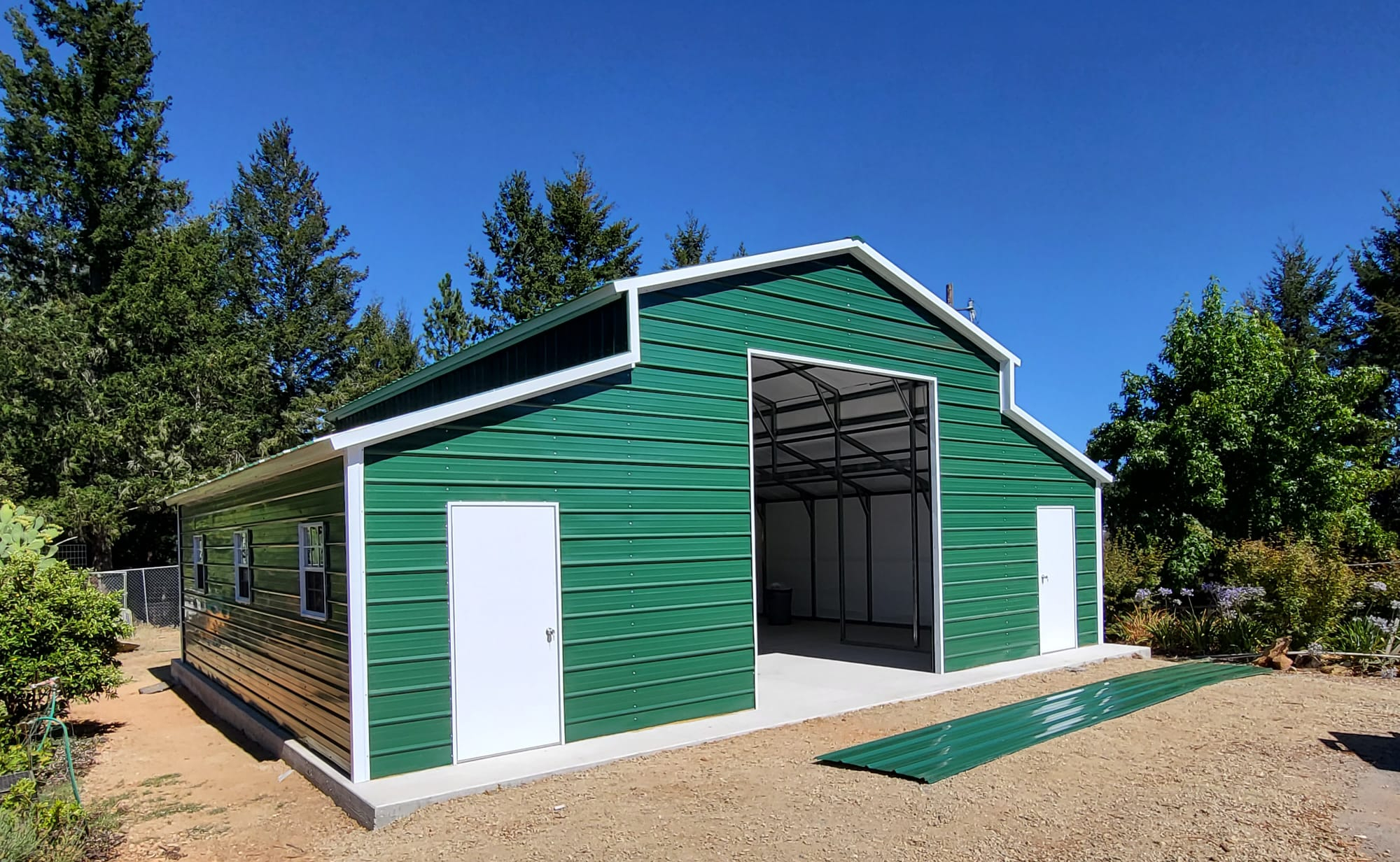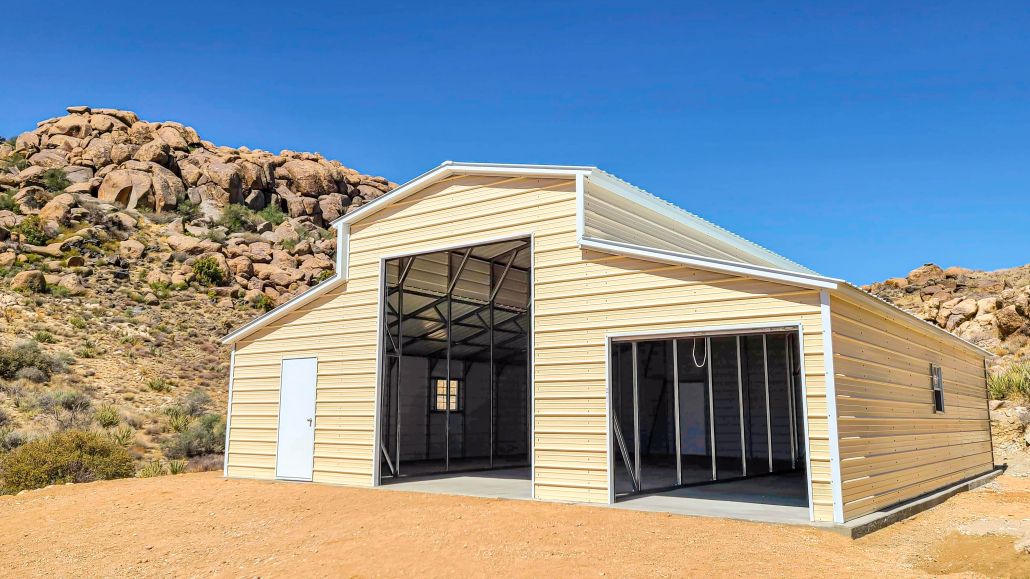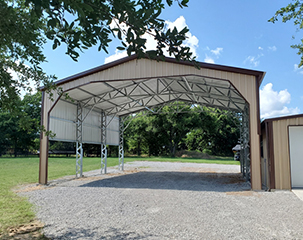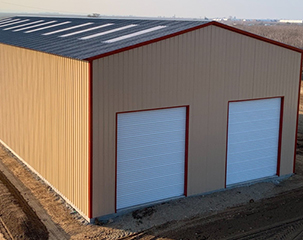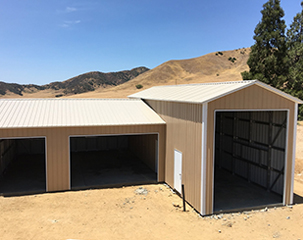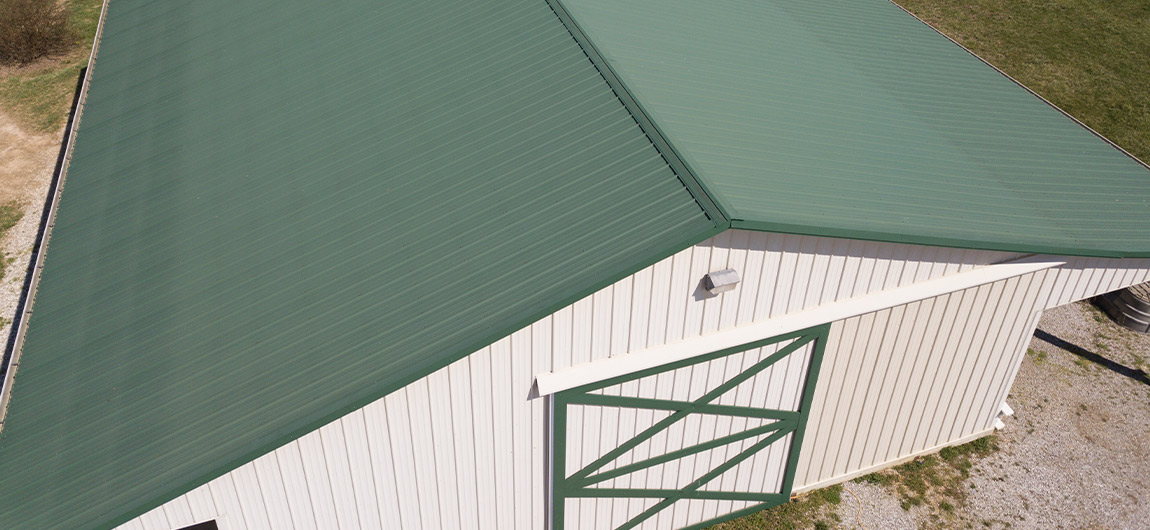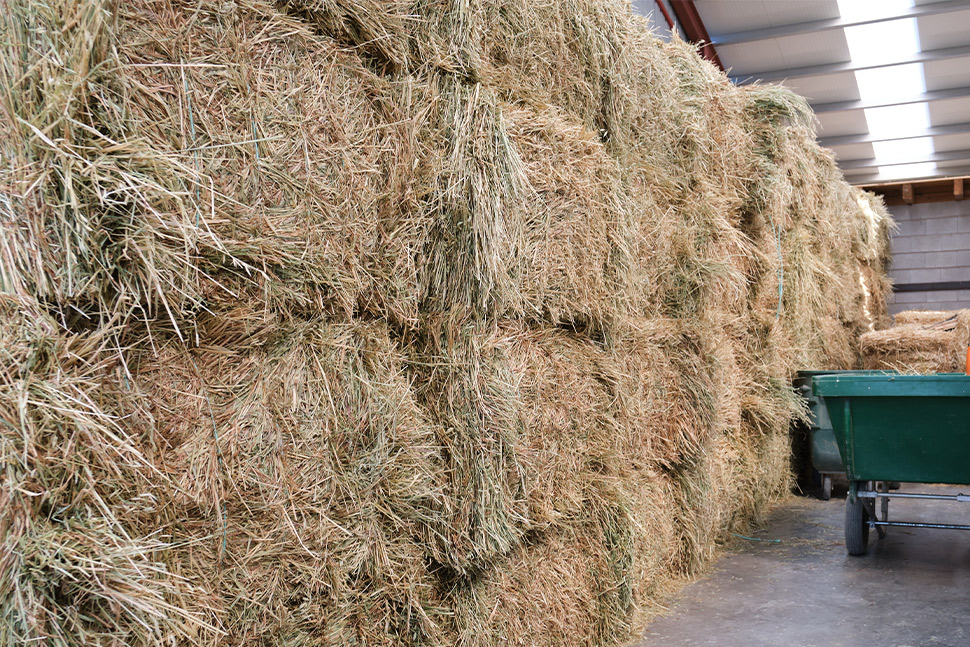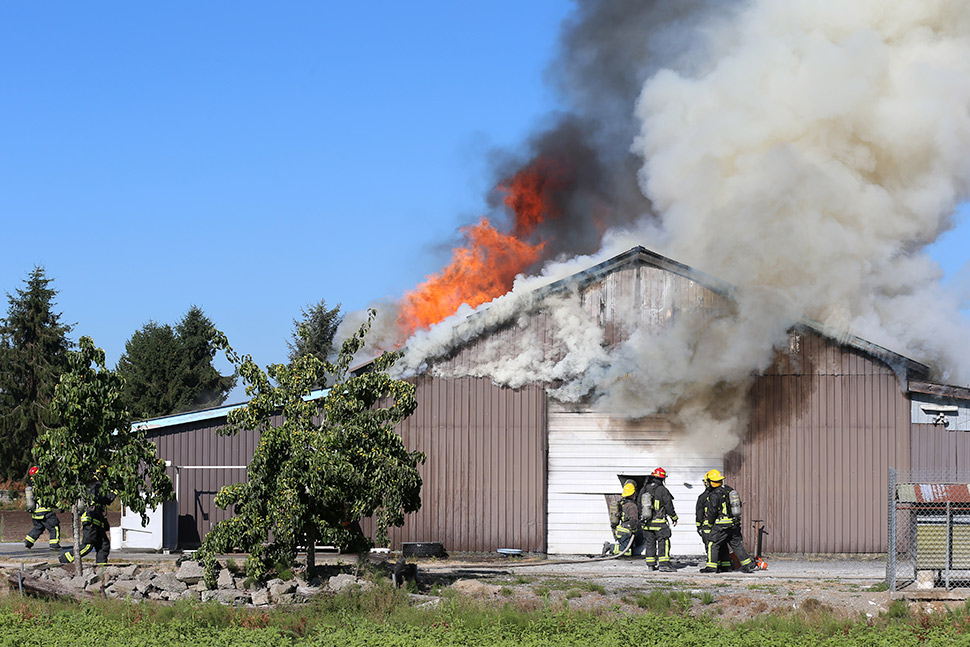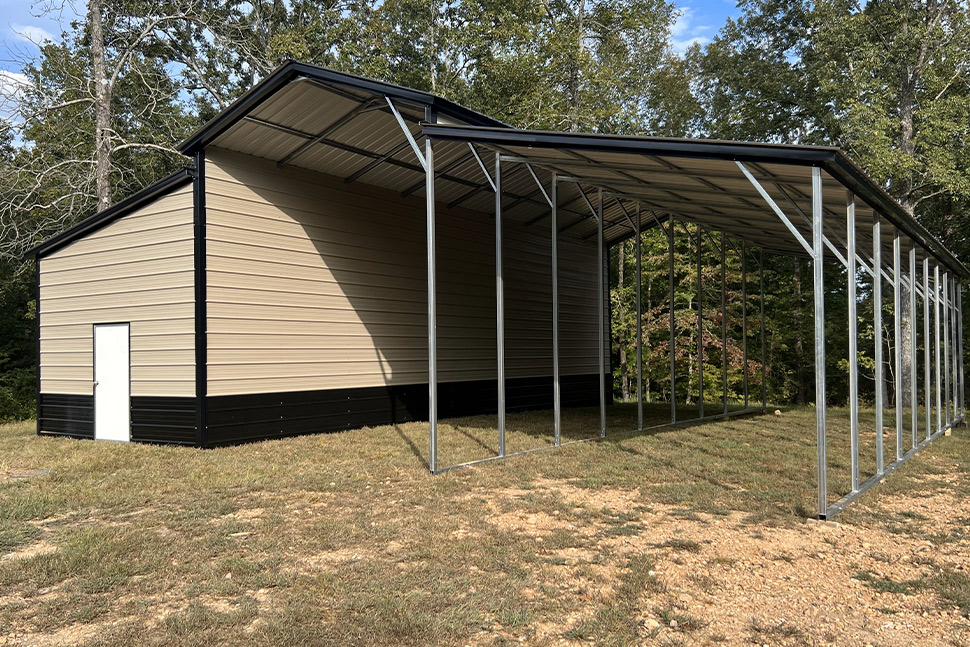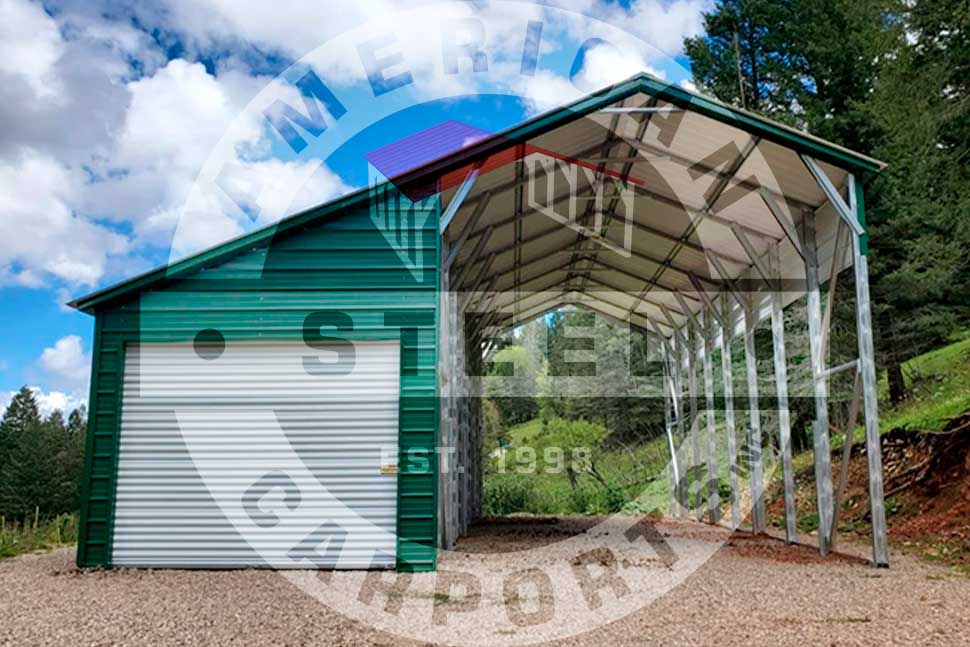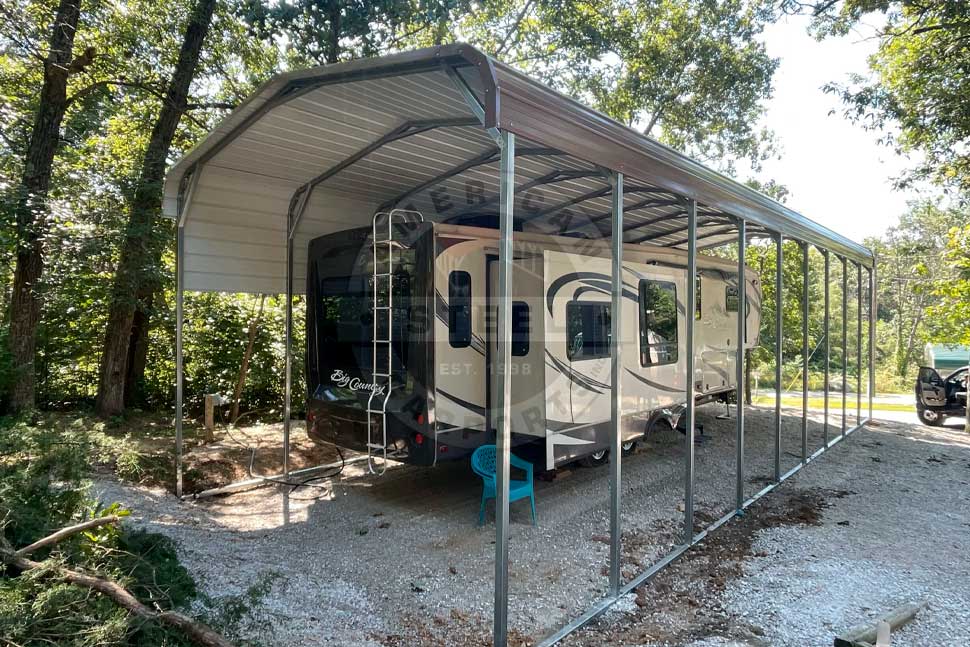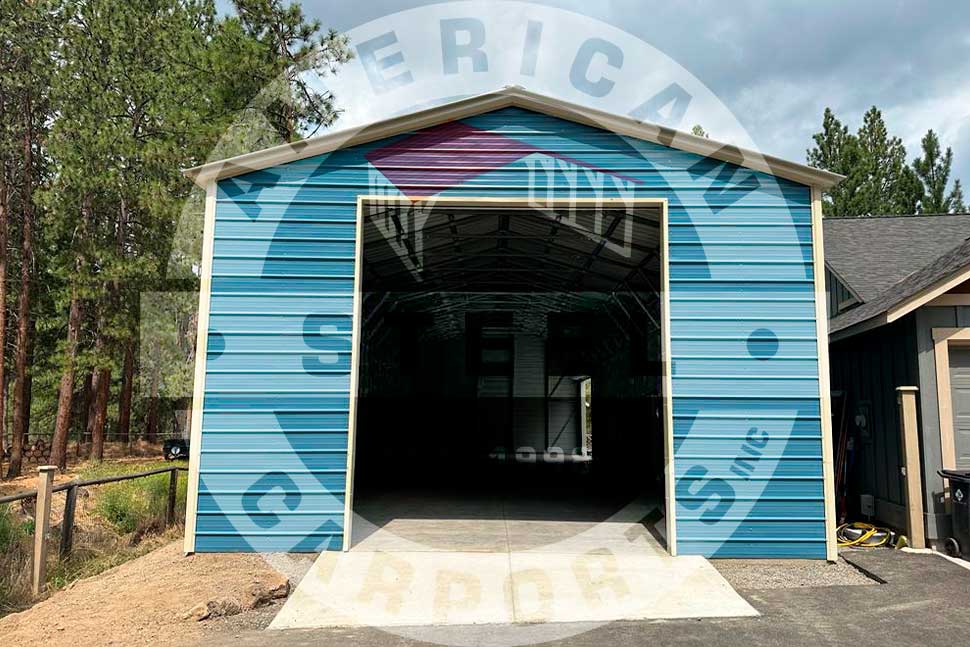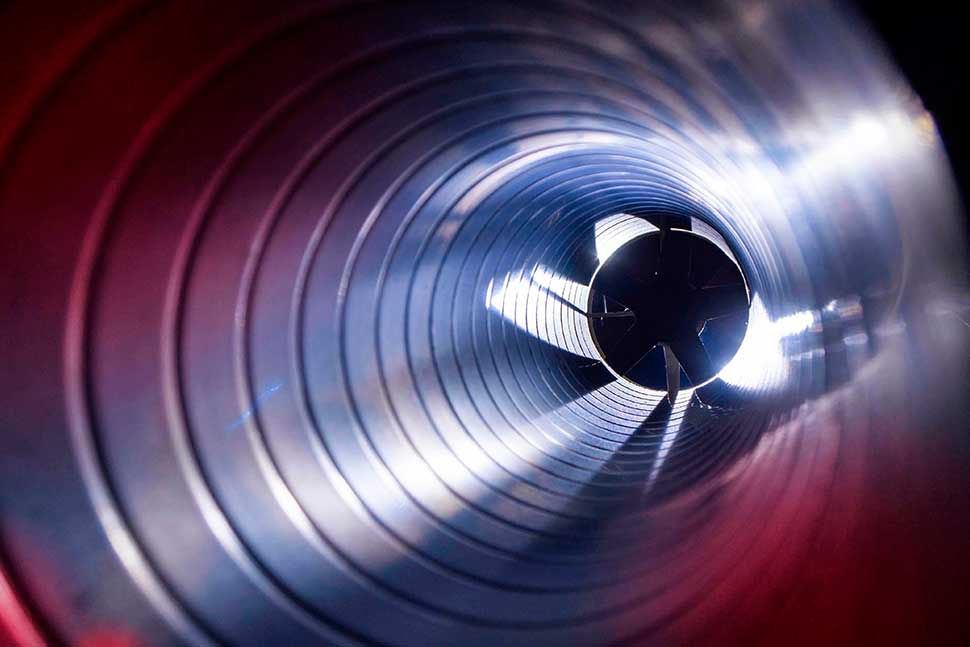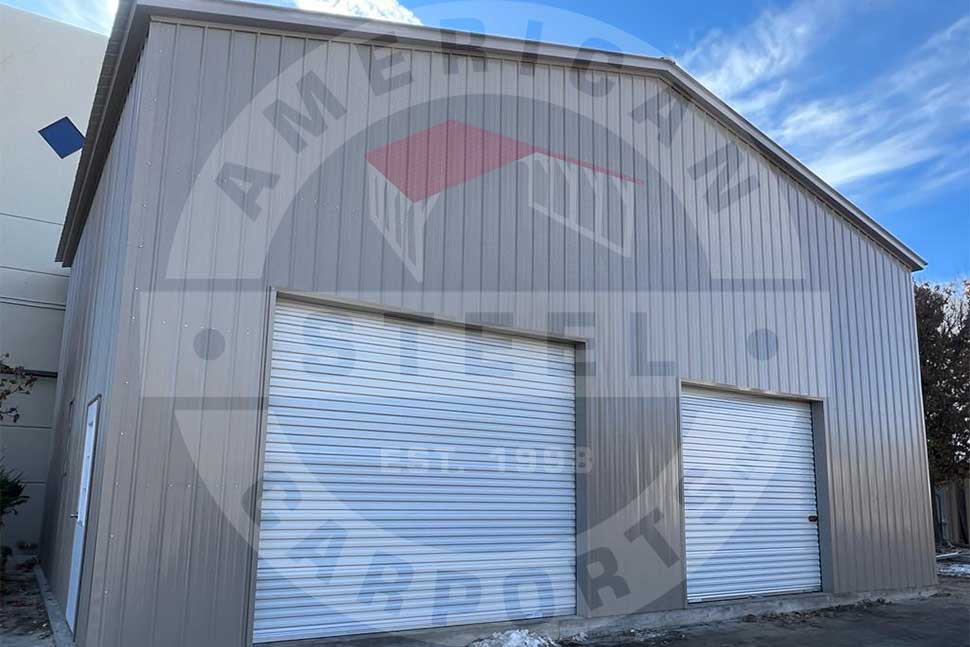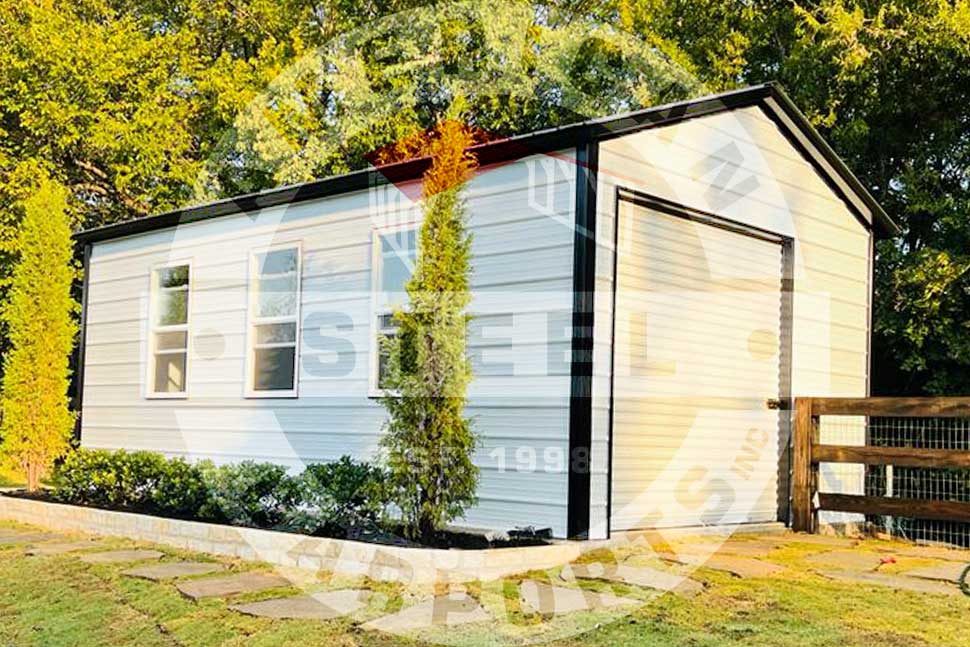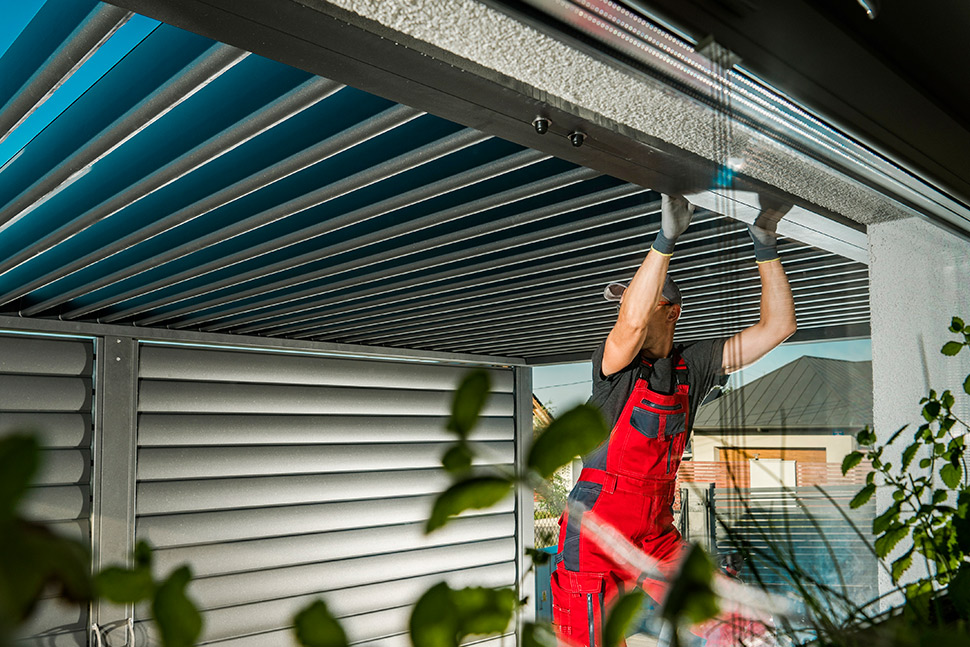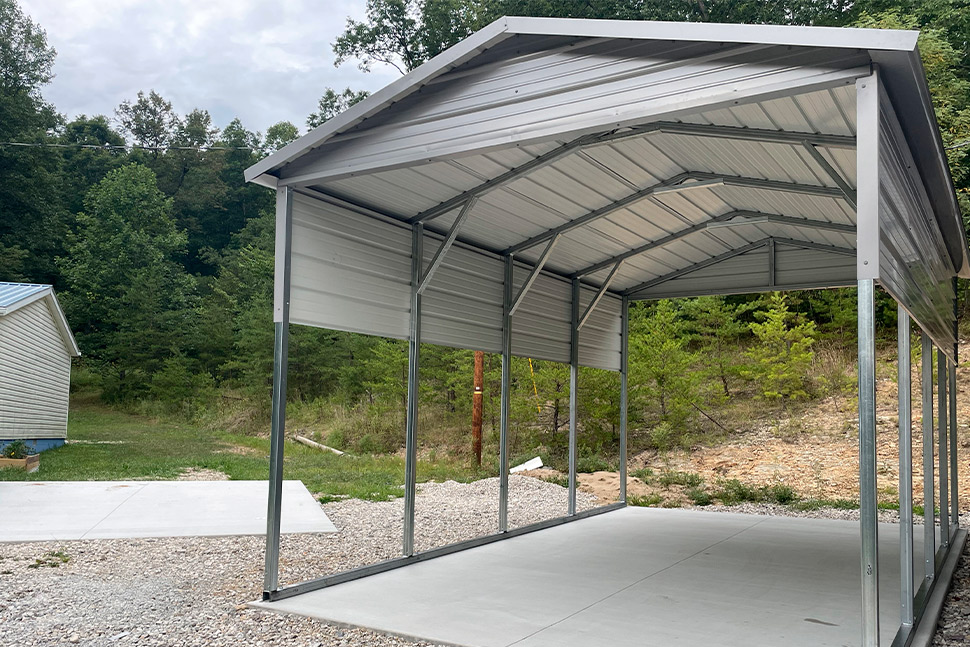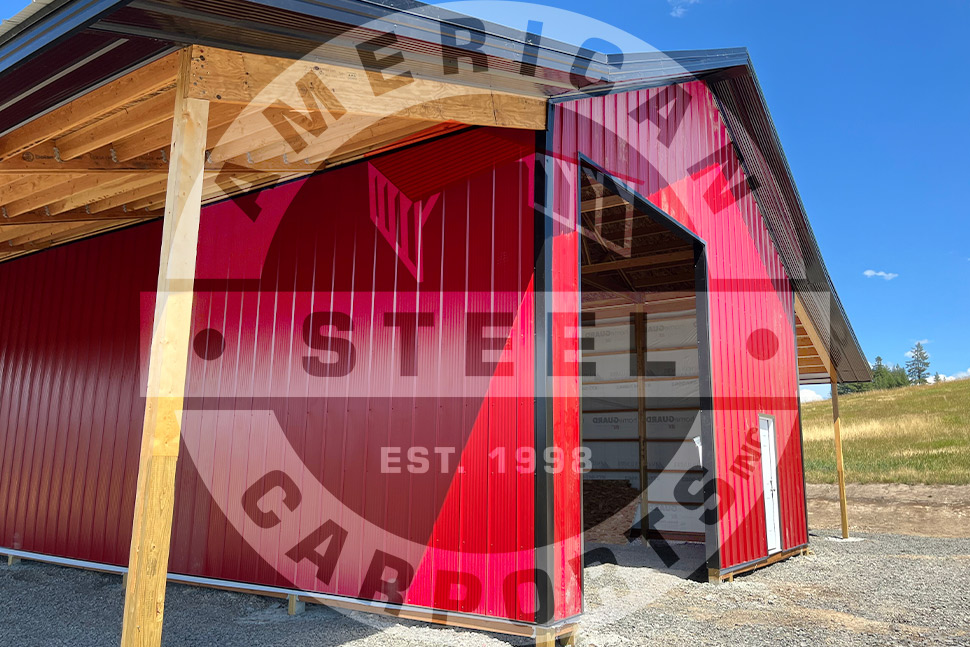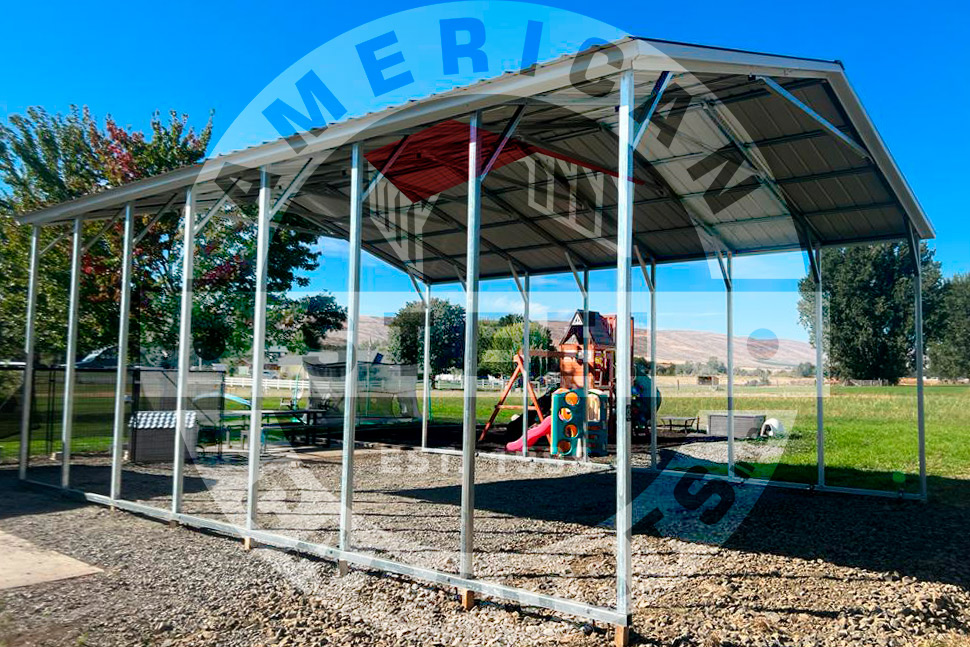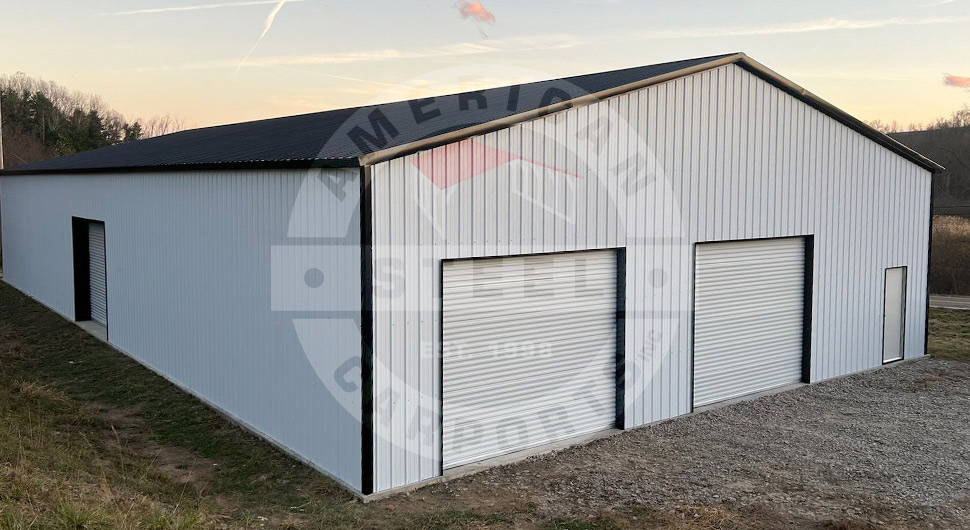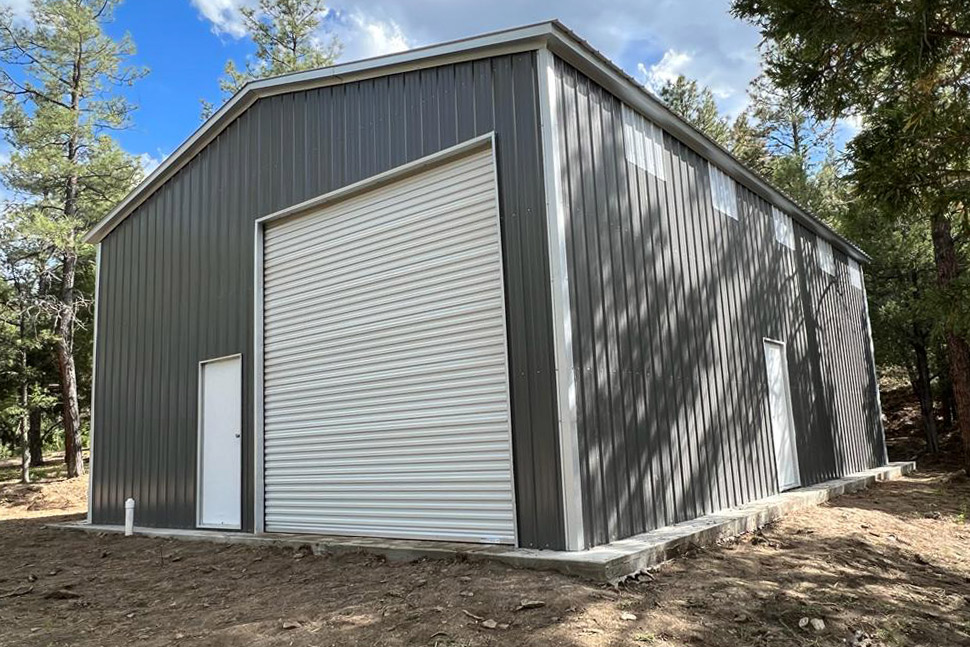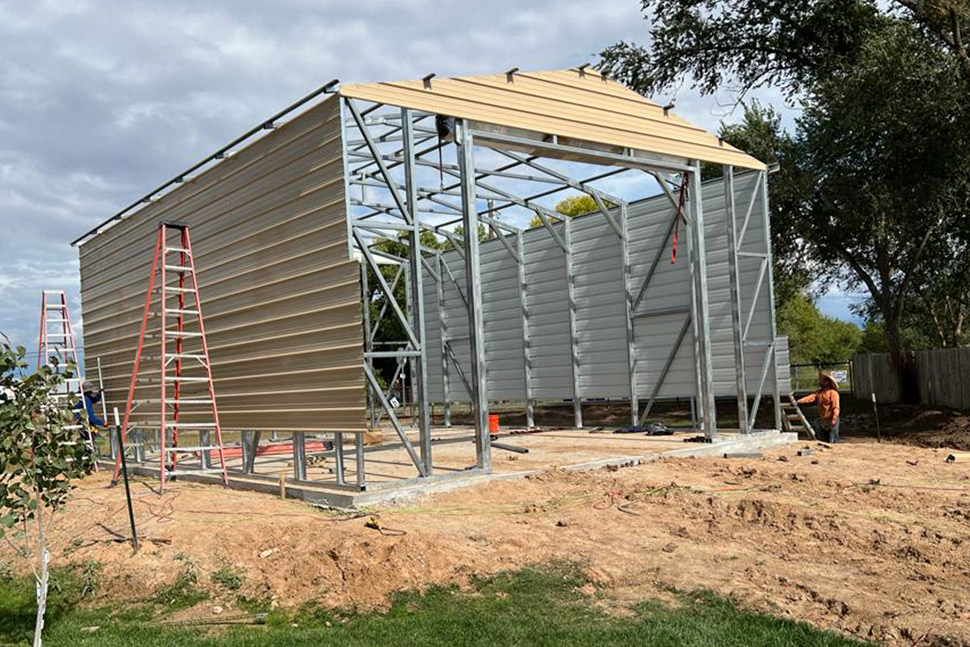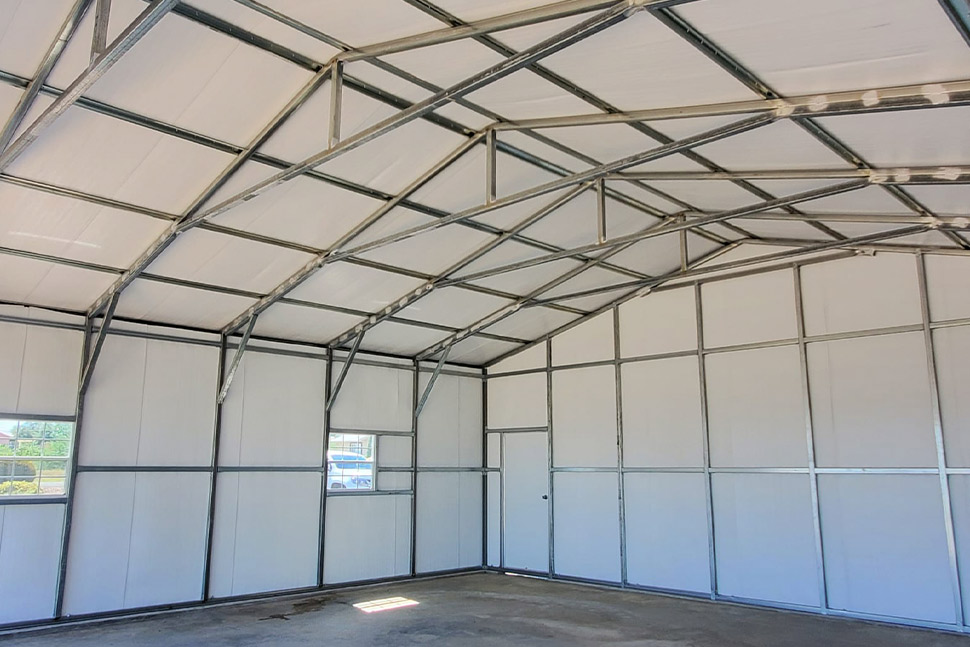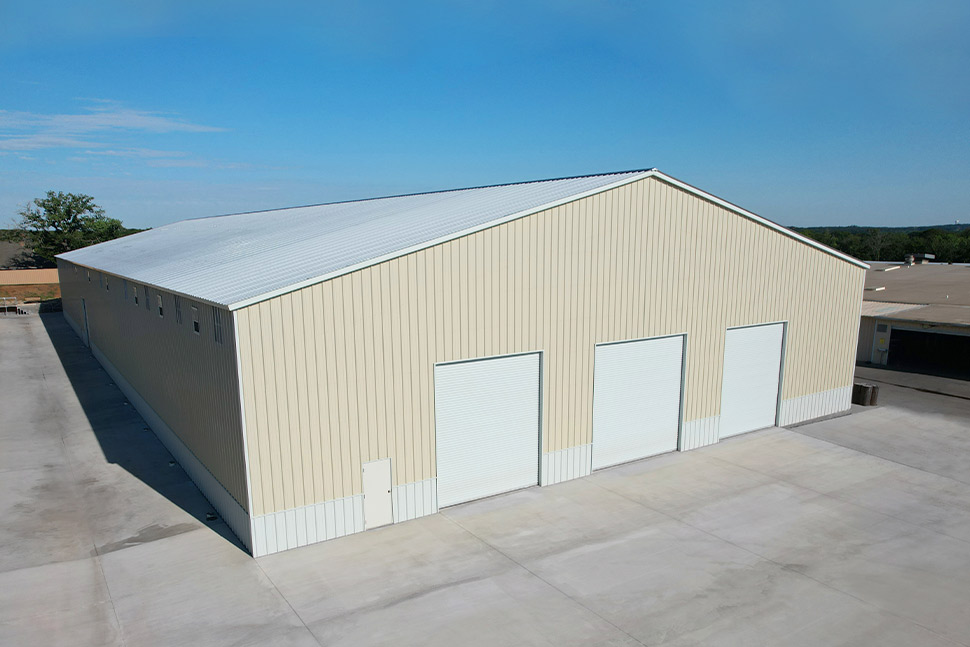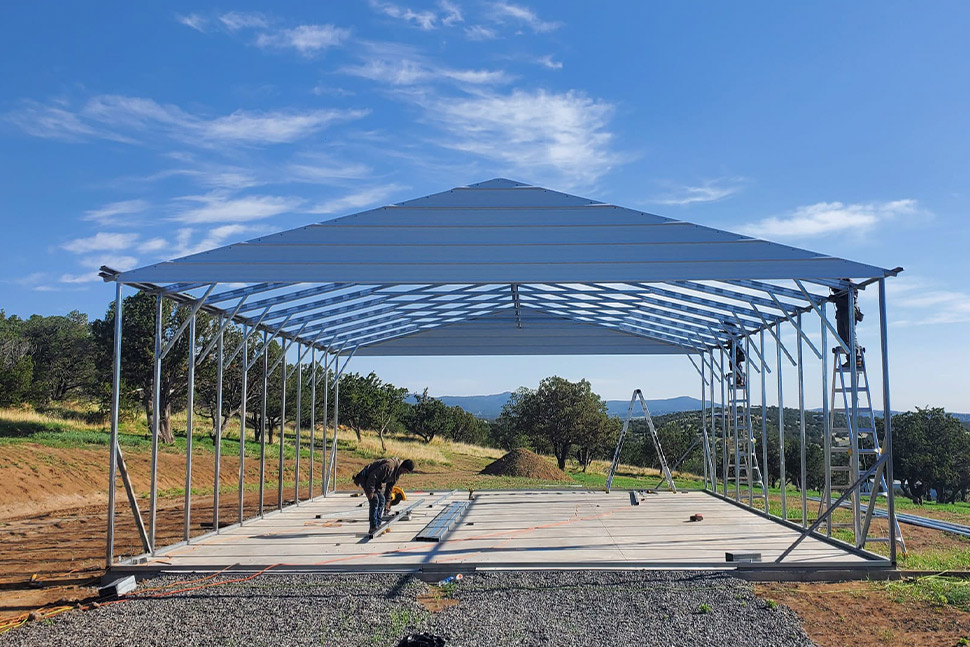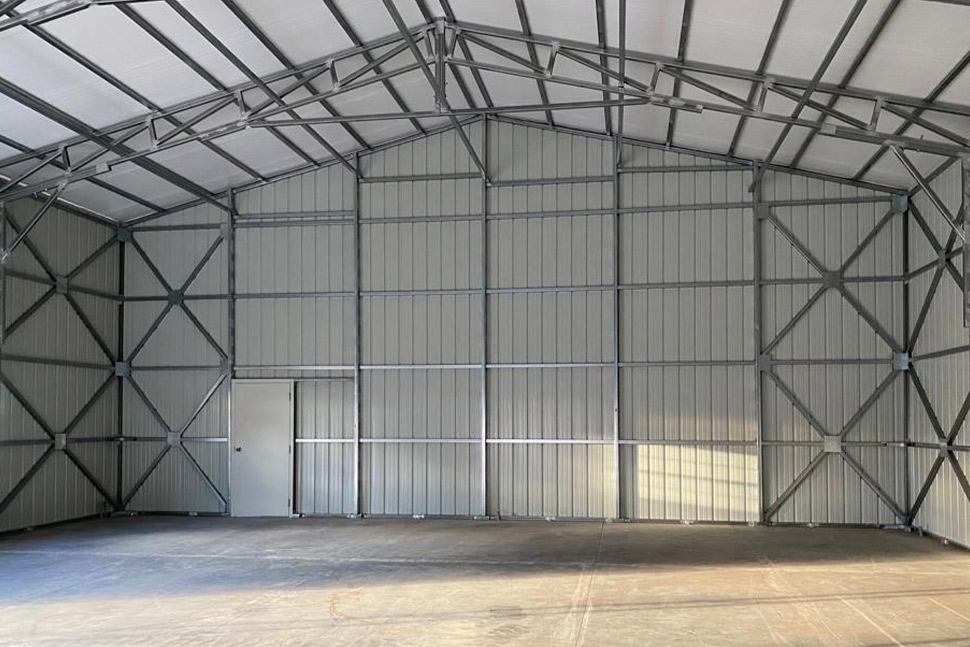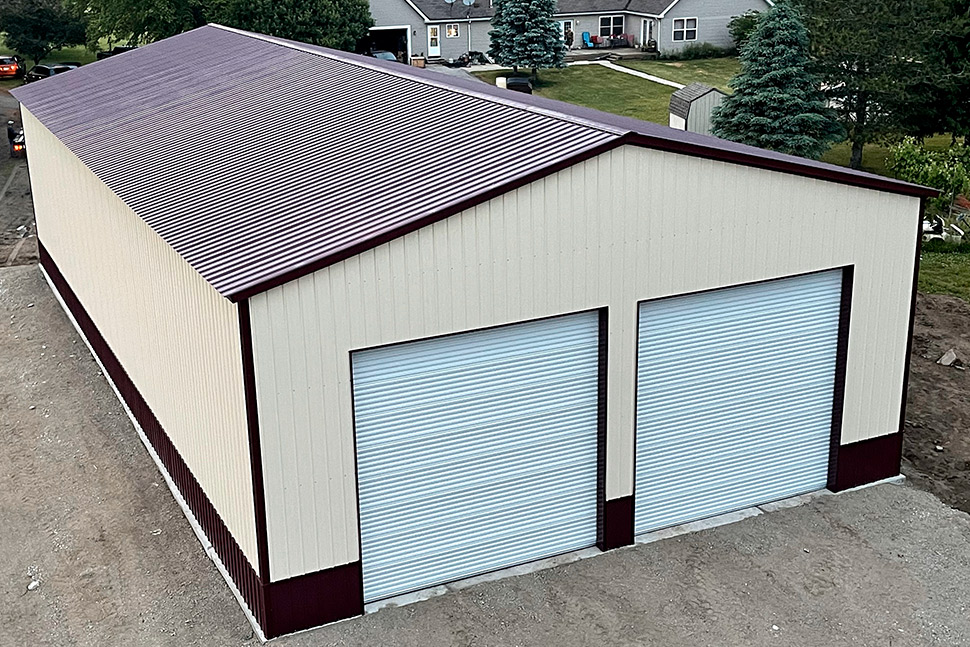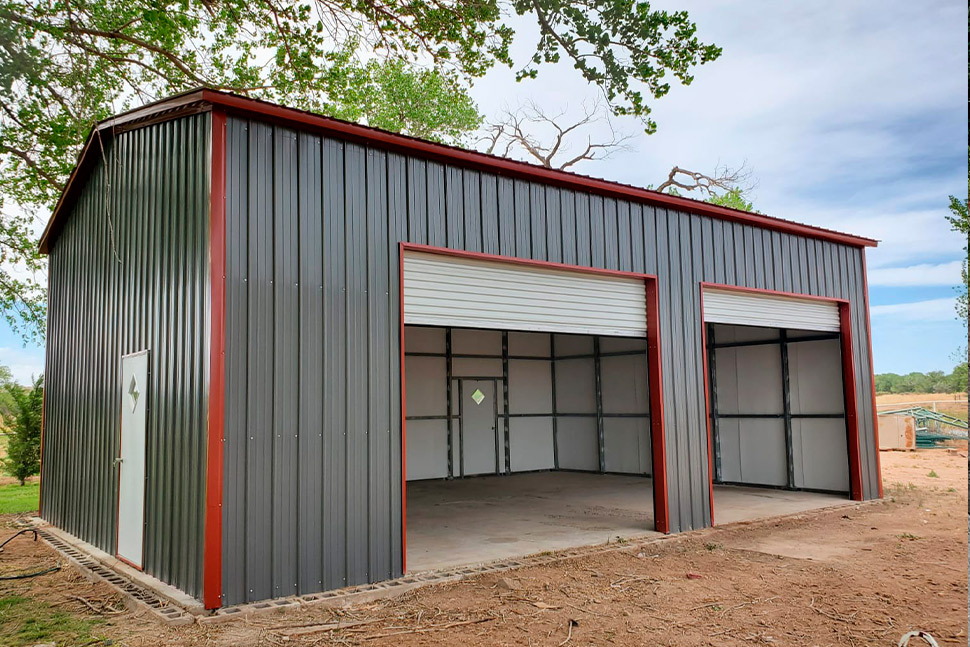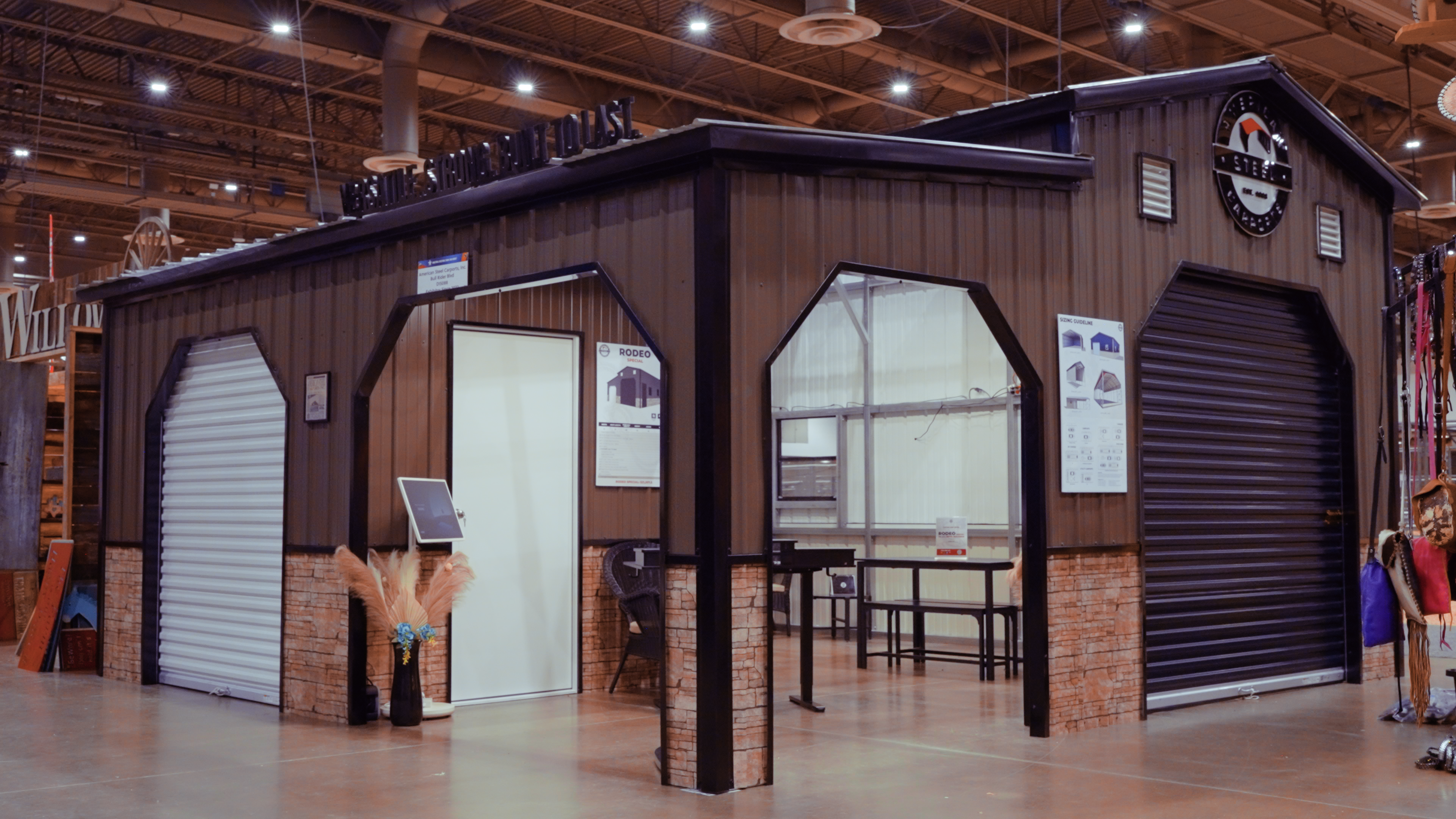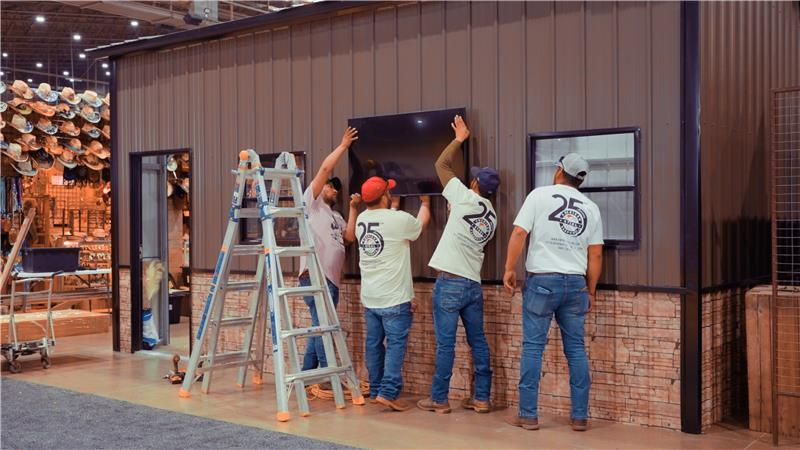
If you’ve ever spent a summer in Texas, you already know—it’s not just hot. It’s fierce. There are days when you step outside and feel like you’ve walked into a hairdryer. Other times, its stormy skies, sideways rain, or hail the size of golf balls crashing down without warning. Texas weather doesn’t play nice, especially in the summer months.
This year, record-breaking floods across parts of Texas have made one thing very clear: it’s not enough for your roof to fight heat. It has to hold its ground when the rain won’t stop.
So, if you’re putting up a steel building — whether it’s a backyard workshop, a storage shed, or something much bigger — the roof is everything. It’s not just the top layer that keeps things dry. It’s your building’s main line of defense against heat, wind, water, time, and now, increasingly erratic weather.
Let’s talk about the five most important roofing options for steel buildings in Texas and figure out which one’s right for your spot in the state.
Texas Steel Roof Styles Comparison Table
| Roof Style | Best For | Ideal Regions in Texas |
| Vertical Roof | Large or valuable buildings in storm-prone areas | Coastal, Central, North, East |
| Boxed-Eave Roof | Medium-sized garages, workshops, matching the house style | Central, North, Hill Country |
| Regular Roof | Small buildings in dry areas (shed, ATV storage, basic workshops) | West Texas, High Plains |
| Cool-Coated Panels | Add-on for any roof style to reduce internal temps and energy bills | Entire state – esp. hot and humid zones |
| Flood-Smart Upgrades | Ventilation, sealants, roof inspections, gutters, site grading | Statewide – critical for flood-prone locations |
1. Vertical Roof Style: The All-Around Champion
If you want a metal roof style that holds its own against just about anything the Texas climate can throw at it, go vertical.
These roofs are built with panels that run up and down, from the ridge to the eaves. That may not sound like a game-changer, but in practice, it makes a huge difference. Rainwater doesn’t pool; it slides right off. Leaves, dust, and debris don’t pile up, they wash away. And when a storm hits? The added structural reinforcements built into vertical roofs mean you’re looking at a system designed to take a beating and keep standing.
They’re especially helpful in places where storms roll through with very little warning, think Dallas-Fort Worth, Houston, or anywhere in the Hill Country where those sudden summer deluges like to show up.
Why people love it:
- Superior drainage (goodbye, puddles and leaks)
- Holds up to high winds and hail
- Less maintenance over time
- Great for large buildings (36 ft+)
Just be aware:
It’s more expensive up front. But if you’re in a storm-prone area or just don’t want to worry about your roof for the next 20 years, this is the one.
2. Boxed-Eave Roof Style: Looks Like Home, Works Like a Pro
Now let’s say you want something a little more… traditional. Maybe your steel building is going up in your backyard, and you don’t want it to stick out like a sore thumb. Enter the boxed-eave roof — a solid middle-of-the-road option that gives you a nice, A-frame shape and a clean, residential look.
Instead of vertical panels, this style uses horizontal ones, which helps keep costs down. But unlike regular rounded roofs (we’ll get to those in a minute), boxed-eave roofs have straight sides and clean lines. That means better water runoff, slightly stronger wind resistance, and an overall more finished feel.
Best suited for:
- Suburban or semi-rural properties
- Garages, hobby shops, or guesthouses
- Folks who care how it blends in with the house
What to consider:
The panels don’t shed water or debris quite as efficiently as vertical styles, and they’re not recommended for super-long buildings. But in areas with moderate weather, they perform just fine and look good doing it.
3. Regular Roof Style: Basic, Budget-Friendly, and Sometimes Just Right

If you’re building something small, temporary, or on a tight budget, the regular roof might be your best bet.
This is the original, no-frills roof style you’ll see on lots of utility sheds and backyard storage units. The panels run front to back, and the roof has a slight curve to it, not quite barn-like, but close. It’s quick to install, cheap to build, and gets the job done, especially in parts of Texas that don’t get walloped with storms.
But, and this is important, it does have limitations. If your area gets heavy rain, high winds, or lots of falling debris (looking at you, East Texas), a regular roof will need more upkeep and might not last as long.
Great for:
- West Texas and drier regions
- Basic storage for lawn equipment, bikes, or tools
- Budget-conscious builds under 35 feet long
Keep in mind:
Horizontal panels mean water travels over more seams, where leaks can start. And there’s no added structural support, so it’s not built for heavy weather.
4. Cool-Coated Roof Panels: A Texas Summer Lifesaver
This one’s less about roof shape and more about how the roof handles heat. No matter which style you go with, applying cool-coated panels is one of the smartest decisions you can make in Texas.
These panels are treated with reflective paint finishes that send sunlight and heat back into the atmosphere instead of letting your roof soak it all in. On a hot day (so… pretty much every day between May and September), the difference in roof temperature can be up to 60 degrees. That’s huge.
Not only does this metal roof style make the inside of your building cooler, it also means lower energy bills and less wear on your HVAC system (if you have one). Plus, they come in more colors than just white, so you can still match your building’s look.
Perfect for:
- Insulated buildings with A/C
- Coastal and southern cities with brutal heat
- Anyone tired of sweating through summer
Pro tip:
Even if your roof is already installed, you can apply reflective coatings later as an upgrade.
Local Tips: What Works Best Where in Texas

Texas is big, and not all of it deals with the same kind of summer madness. What works great in Lubbock might fall short in Galveston. So, here’s a quick breakdown of roof considerations based on where you live:
West Texas (Lubbock, Midland, El Paso)
Hot, dry, dusty. Not much rain, but big day-night temp swings
- Regular roofs with light-colored cool coatings are usually enough
- Focus on reflectivity and fast, affordable builds
East Texas (Tyler, Beaumont, Texarkana)
Humid, heavy rainfall, thunderstorms. Watch out for mold, mildew, and pooling water
- Vertical roofs with proper drainage and sealed seams
- Consider attic ventilation to combat humidity buildup
North Texas (Dallas, Fort Worth, Denton)
Big mix of hailstorms, heat, and high winds
- Vertical roofs with reinforced framing are a must
- Cool coatings and strong anchors recommended for storm resilience
Central Texas (Austin, Waco, San Marcos)
Hot, humid summers + random downpours
- Boxed-eave or vertical roofs work well
- Ventilation and occasional coating touch-ups go a long way
South Texas & Gulf Coast (Houston, Corpus, Brownsville)
Think hurricane season, extreme humidity, brutal sun
- Go vertical, no questions asked
- Storm-rated anchors, reinforced structures, and reflective coatings
- Watch out for salt exposure if you’re near the coast—corrosion protection helps
Get a Roof That Can Handle Texas with American Steel Carports
When it comes to steel buildings in Texas, your roof isn’t the place to cut corners. The wrong choice could mean leaks, warping, heat buildup, or worse — total roof failure when the next storm hits.
But the right choice? That’s peace of mind. It’s a cooler space, a longer-lasting structure, and fewer calls to the repair guy.
So here’s the quick takeaway:
- Go vertical for strength and storms
- Boxed-eave for a nice balance of looks and performance
- Regular if it’s a smaller build in a dry zone
- Cool coatings to beat the heat, no matter what
- And always, match your roof to your climate
Texas weather isn’t getting any gentler. But with the best roof for heat over your head, your steel building will be ready for whatever this wild, wonderful state has in store.
Whether you’re looking for vertical strength, stylish boxed-eave looks, or energy-saving cool-coated panels, American Steel Carports Inc. offers custom-built solutions engineered to last. Contact us today to learn more.

